Hue- 2007
I had a 4-week Indochina trip in May-June 2007.
(Melbourne – Bangkok – Thailand – Laos - Vietnam - Cambodia -Thailand – Bangkok - Melbourne)
We travelled by overnight train from Haoi to Hue on my IntrepidTravel tour.
Between 1802 and 1945, Hue was the imperial capital of the Nguyễn Dynasty.
It is another World Heritage Site.
Half an hour after arriving in Hue on the overnight train from Hanoi we were off exploring the sights
as pillion passengers on the back of motorcycles.
I was lucky enough to have the guide, Than, as my rider. He was quite a jovial character.
Next morning we went for a boat ride on the Perfume River.Next morning we went for a boat ride on the Perfume River.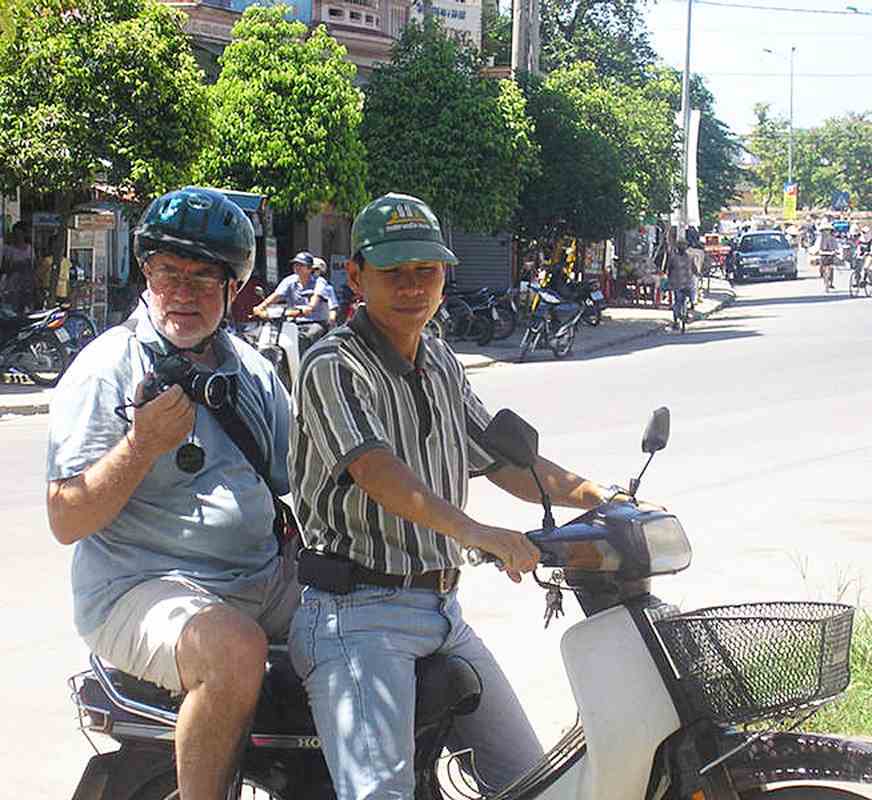
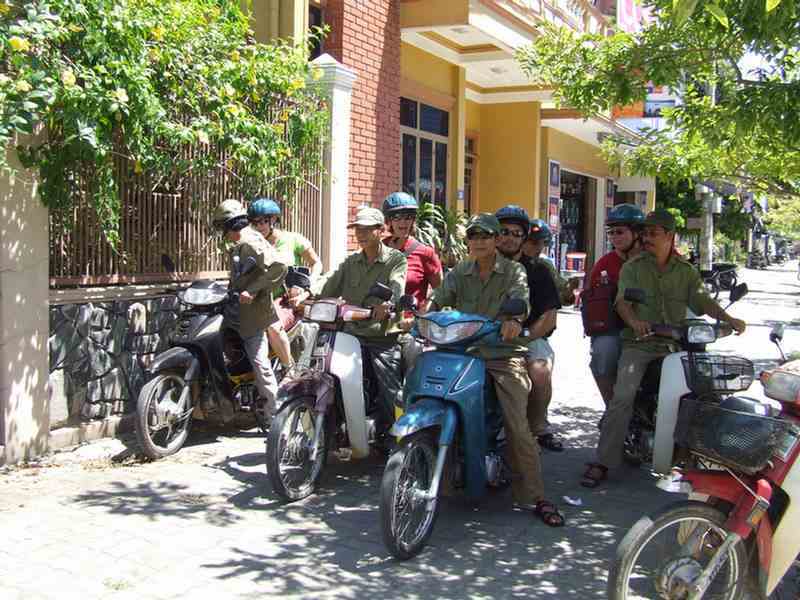
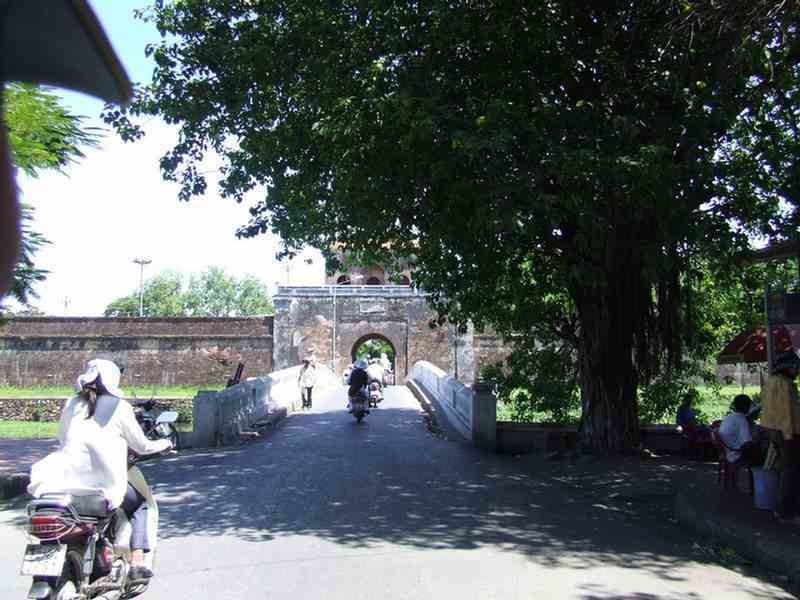
Firstly we went to the Imperial Citadel.
Completed in 1908, this vast complex was the royal residence of the kings of Vietnam.
Like the city of Hue itself, many of the original buildings were destroyed in the Indochina and Vietnam wars.
The area is now under reconstruction. It is a smaller version of the Forbidden City in Beijing, but better decorated.
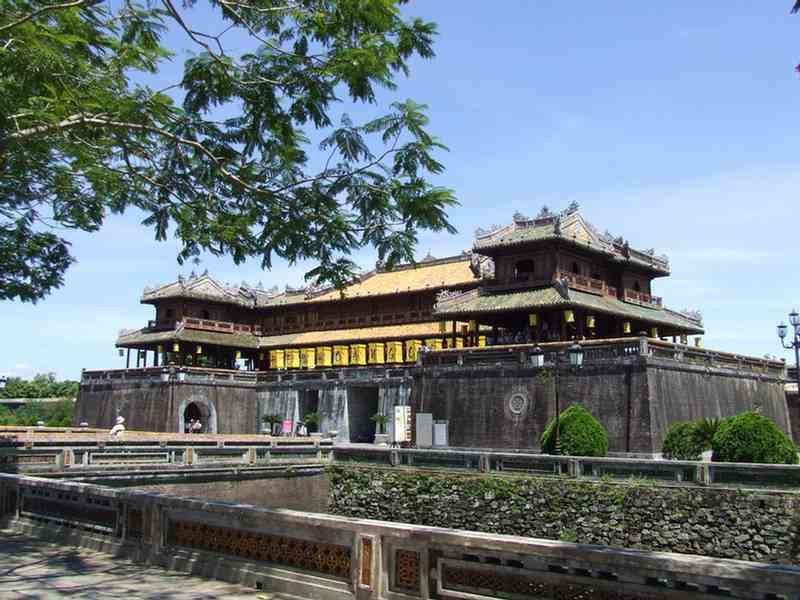
Hue is intimately connected to the imperial Nguyễn Dynasty, based in Hue, who ruled from 1804 to 1945,
when the Emperor Bao Dai abdicated in favor of Ho Chi Minh's revolutionary government.
The city went through tough times during the Vietnam War, when it was conquered by the Viet Cong and held for 24days,
during which the VC slaughtered around 1,000 people suspected of sympathizing with the South,
and then subject to an American bombing campaign to retake the city.
The Citadel was badly knocked about during fighting between the French and the Viet Minh in 1947,
and again in 1968 during the Tet Offensive, when it was shelled by the Viet Cong and then bombed by the Americans.
As a result, some areas are now only empty fields, bits of walls, and an explanatory plaque.
Other buildings are intact, though, and a few are in sparkling condition.
For the rest, while restoration has been going on for 20 years, there is still quite a long way to go.
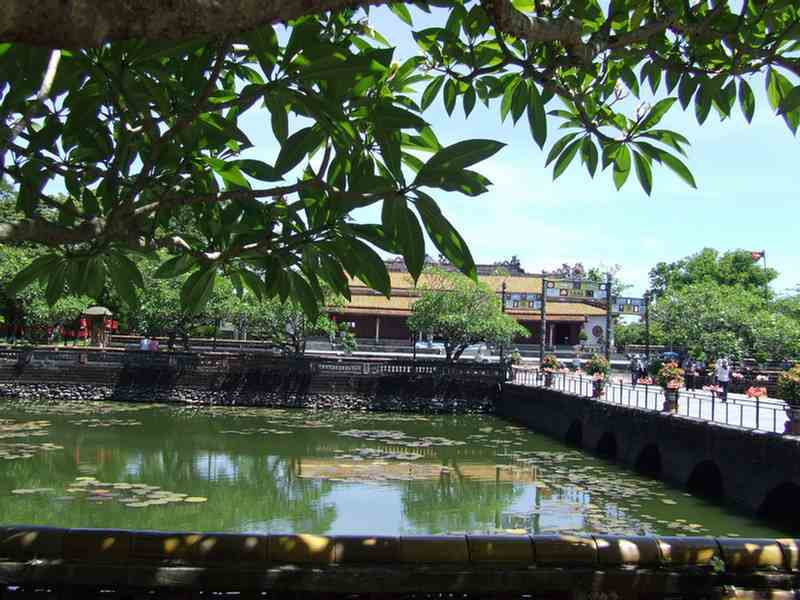
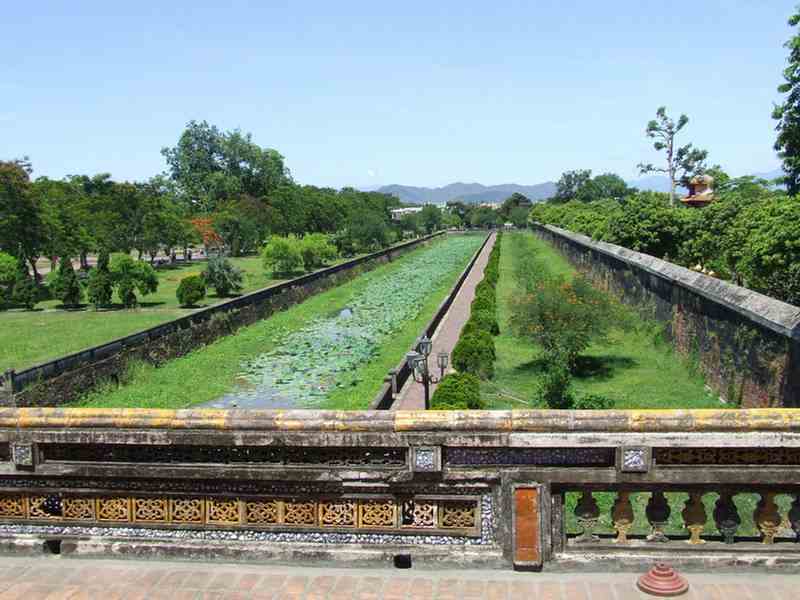
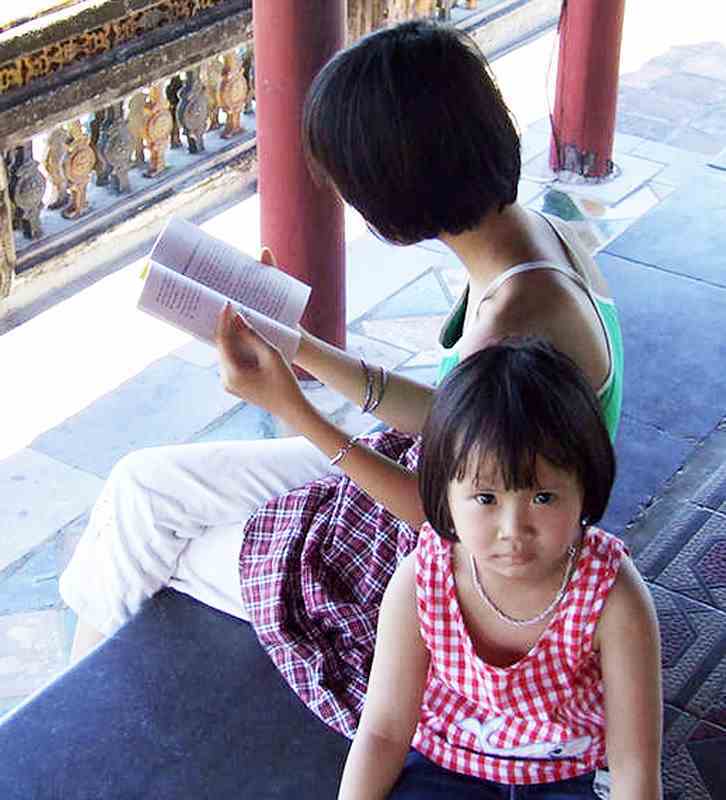
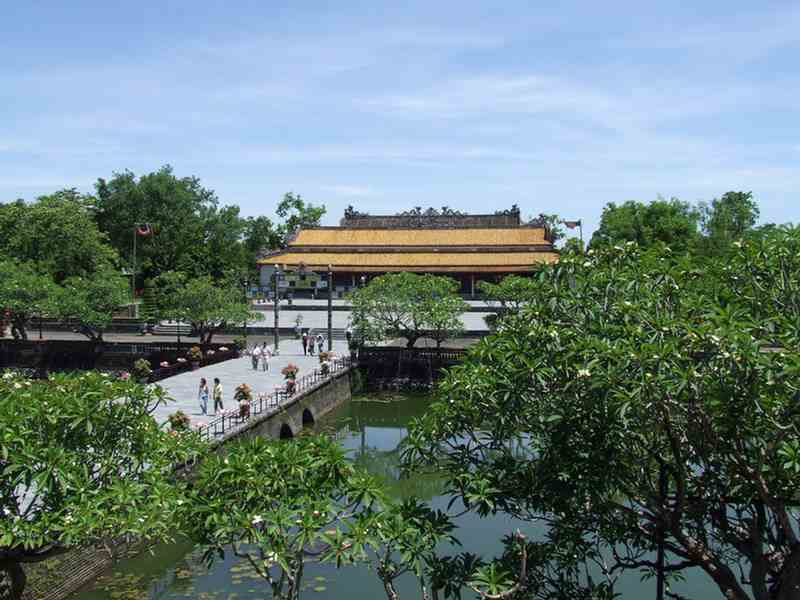
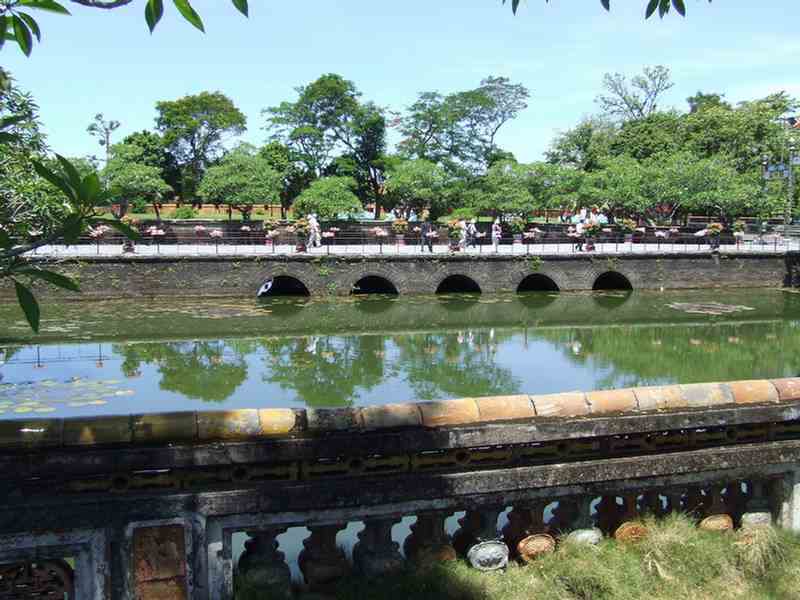
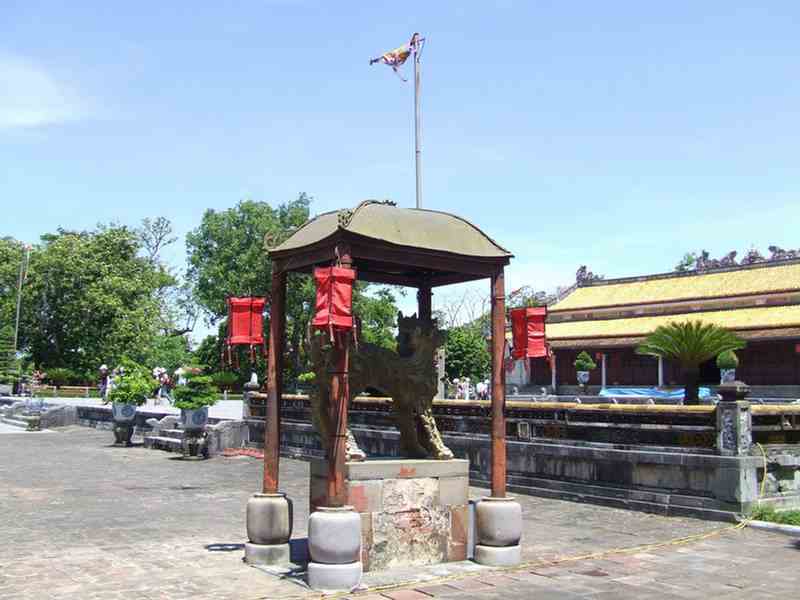
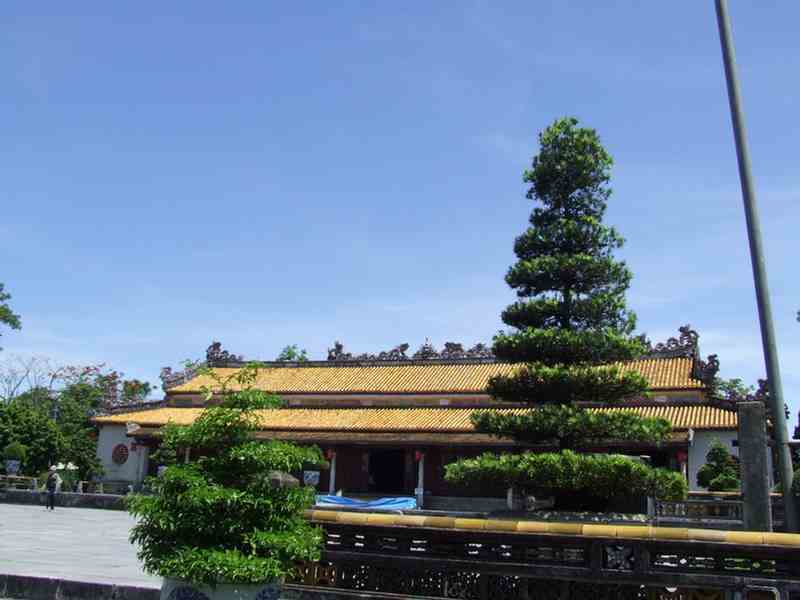
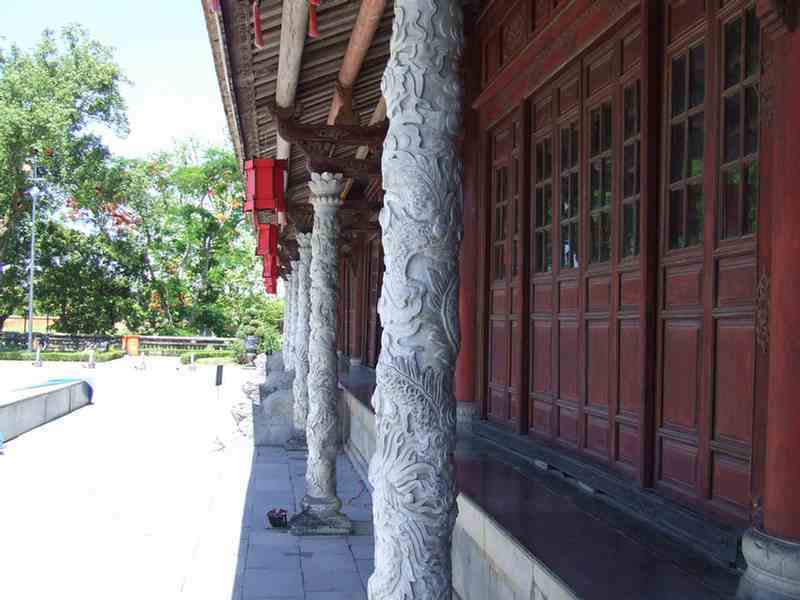
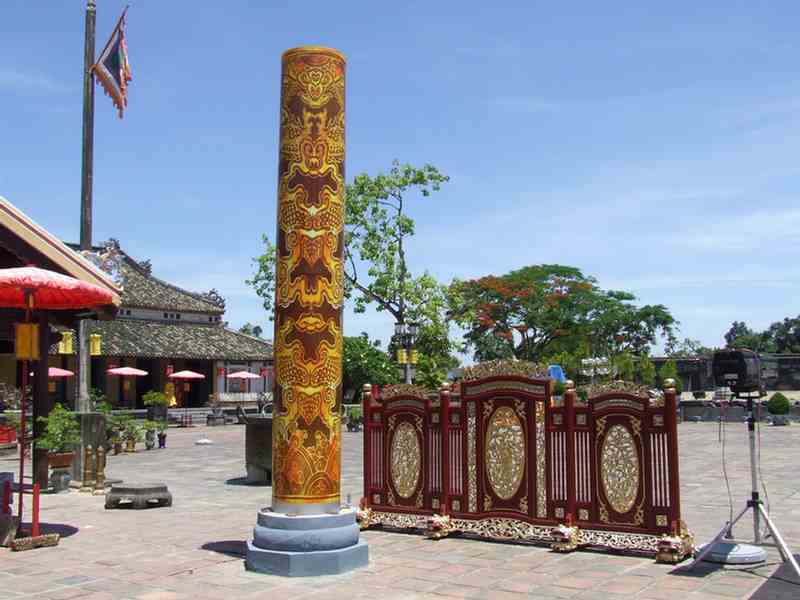

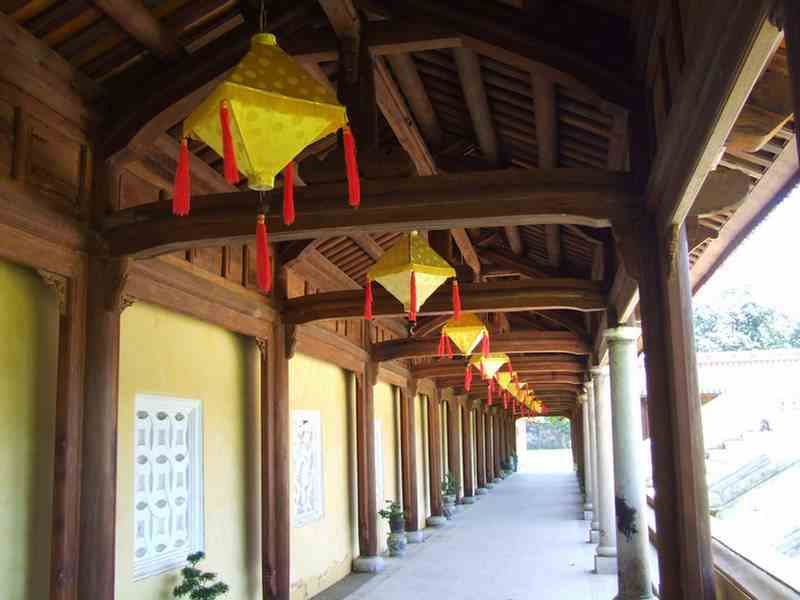
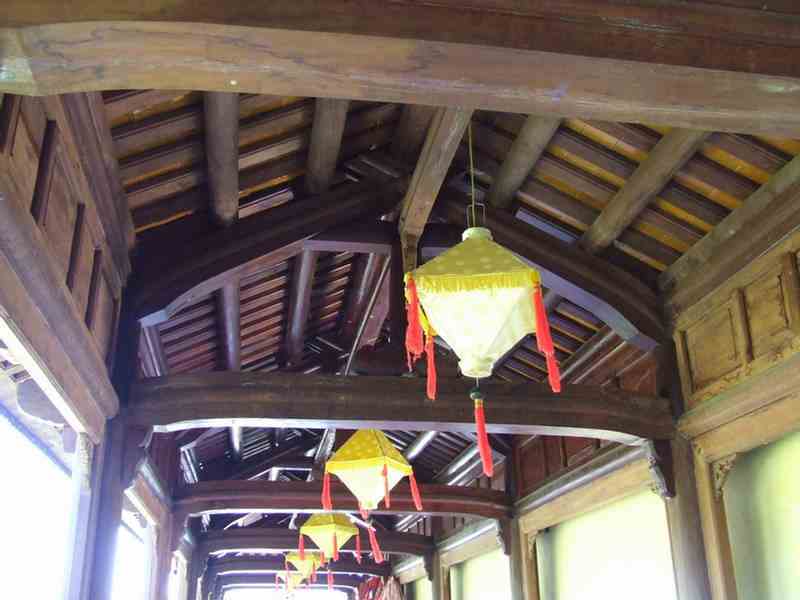
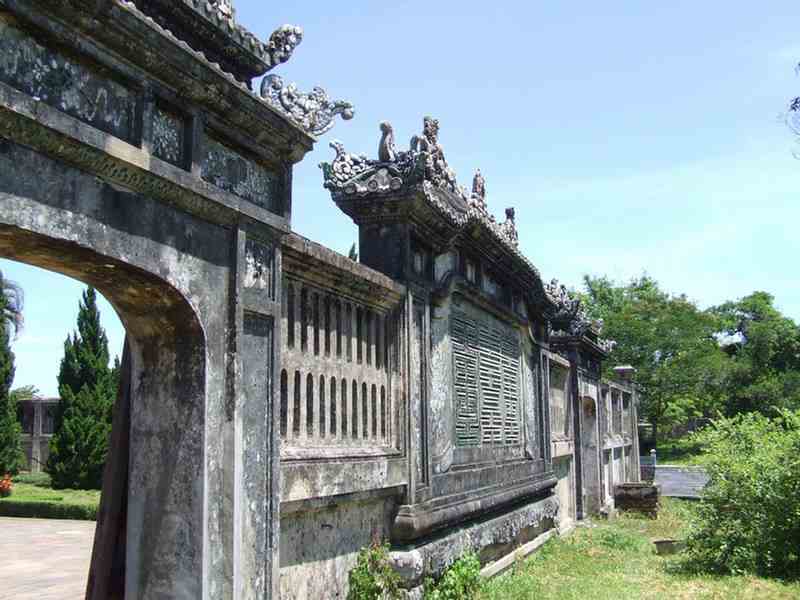
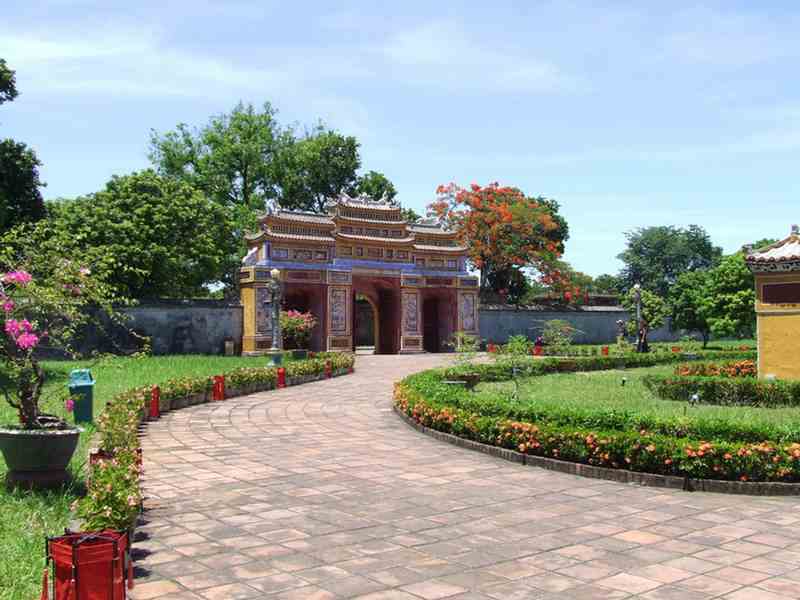
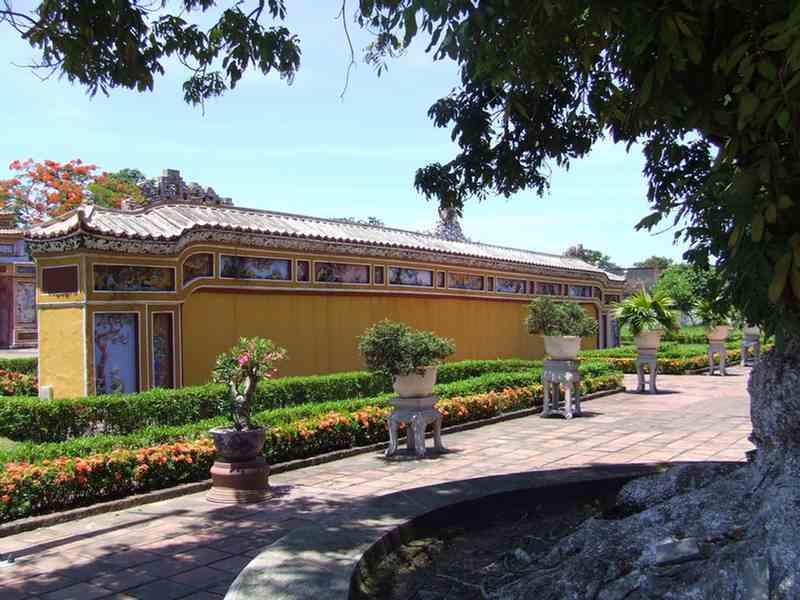
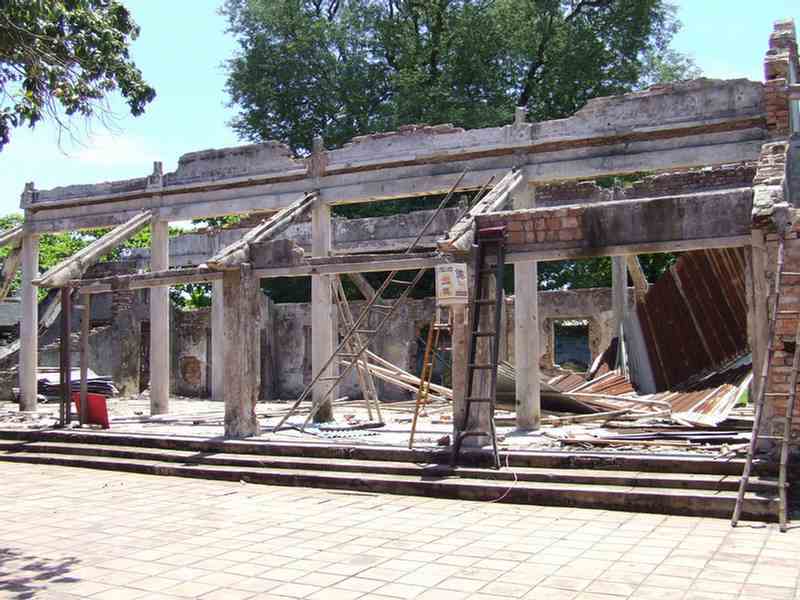
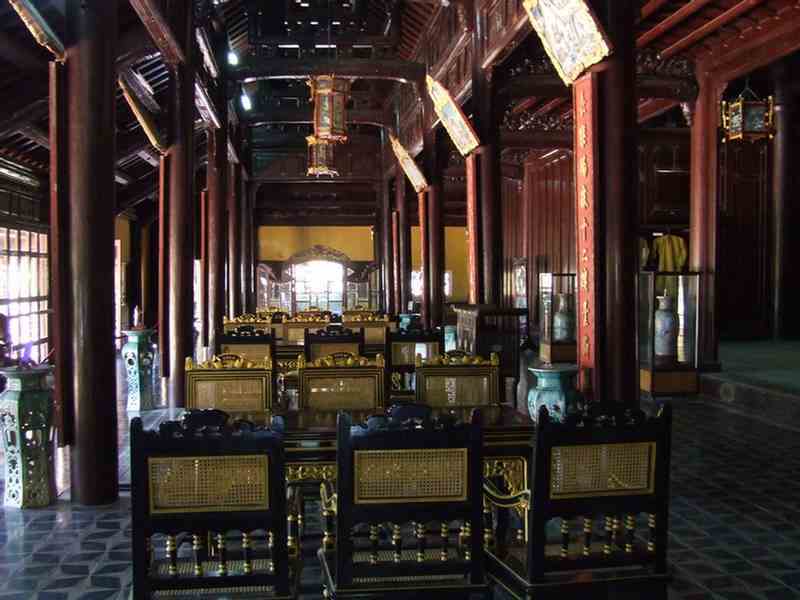
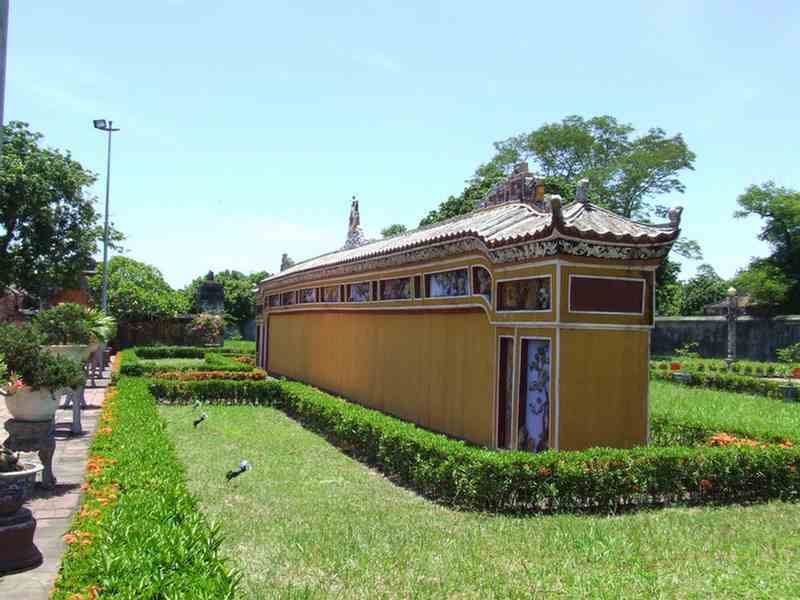
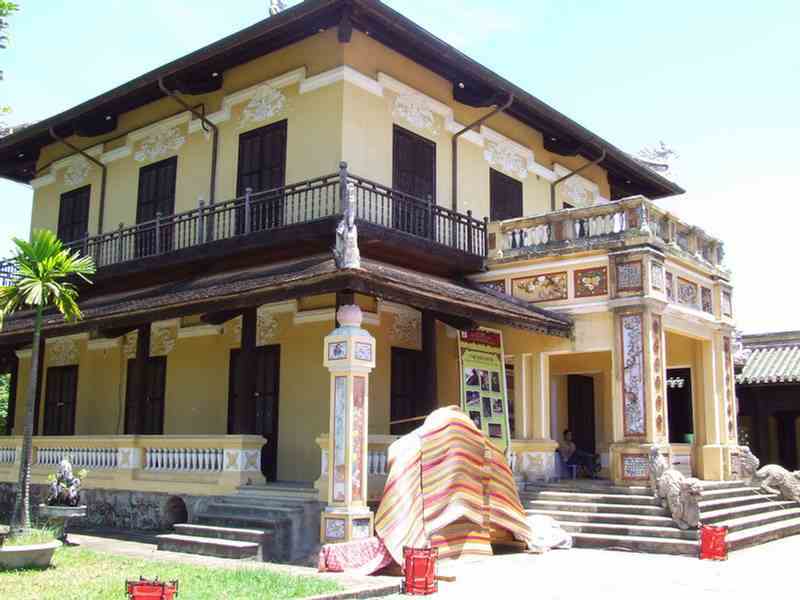
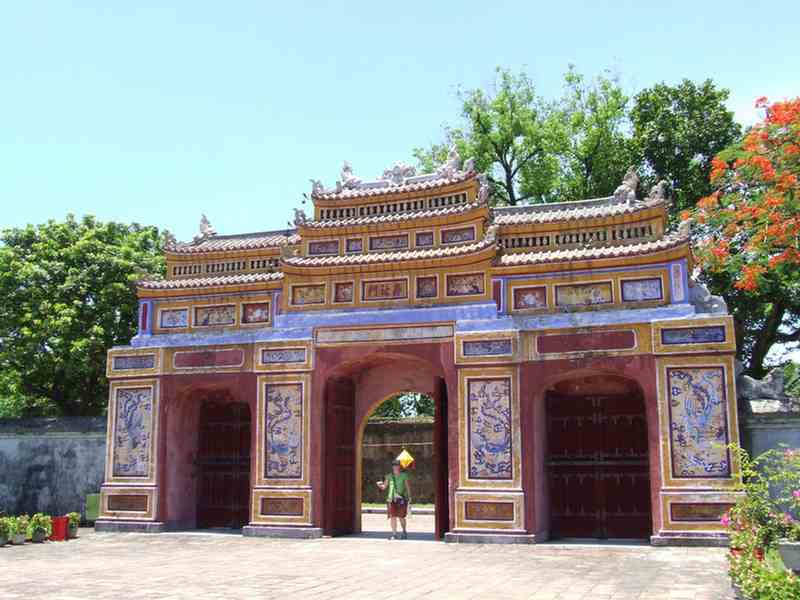
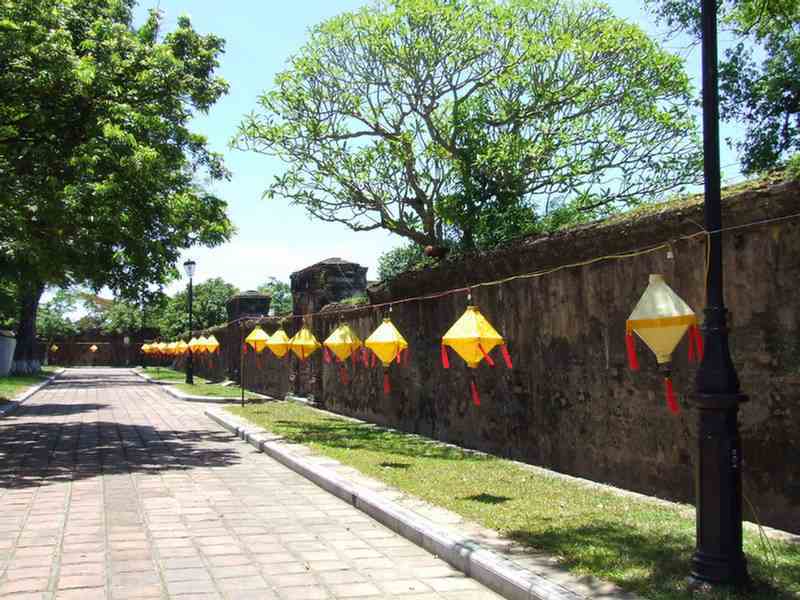
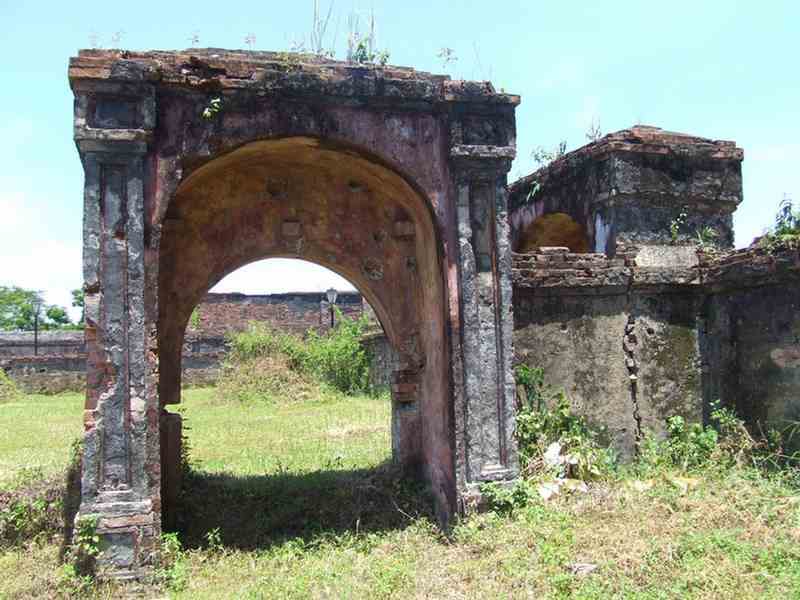
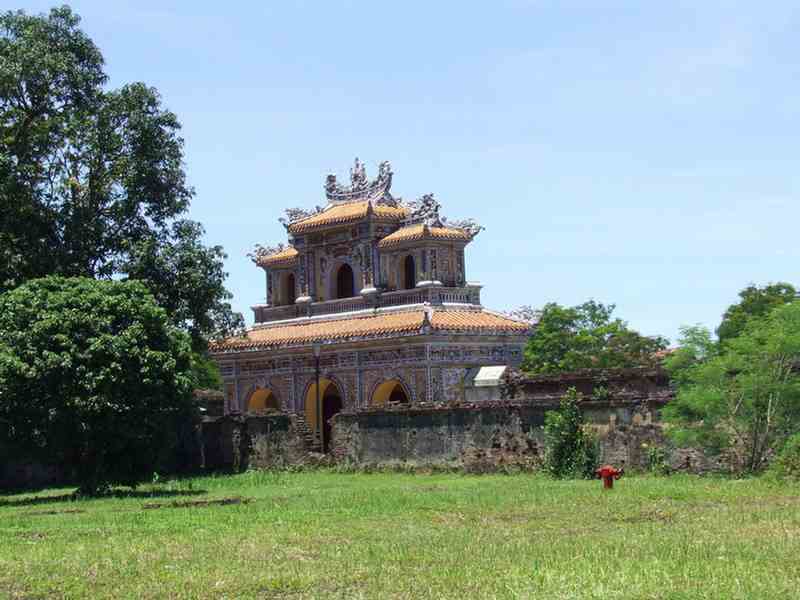
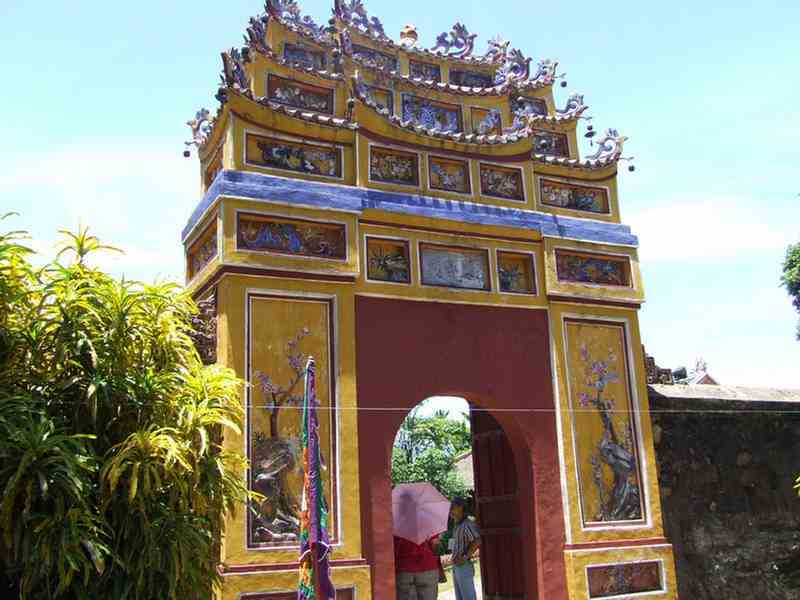
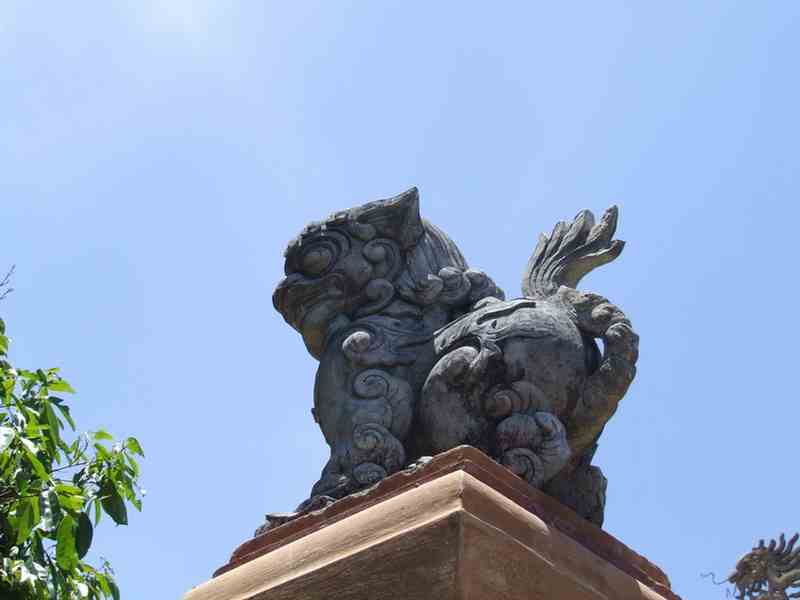
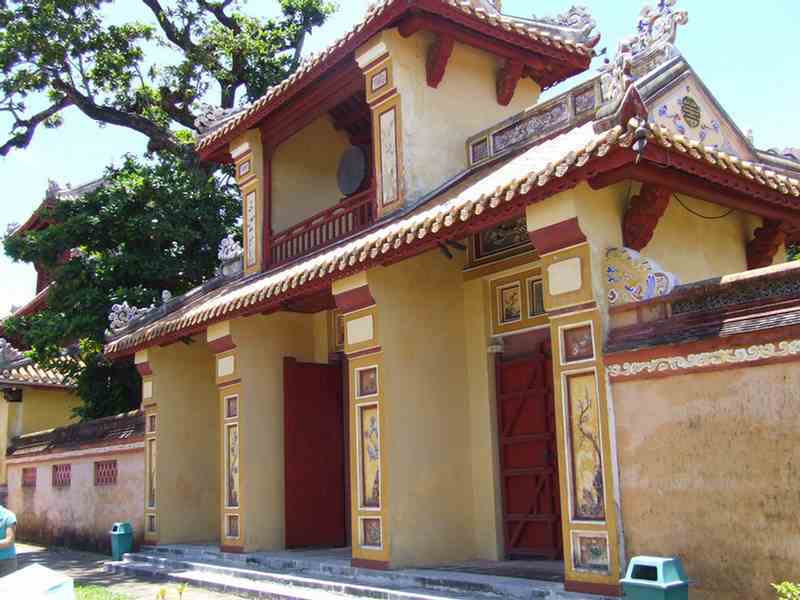
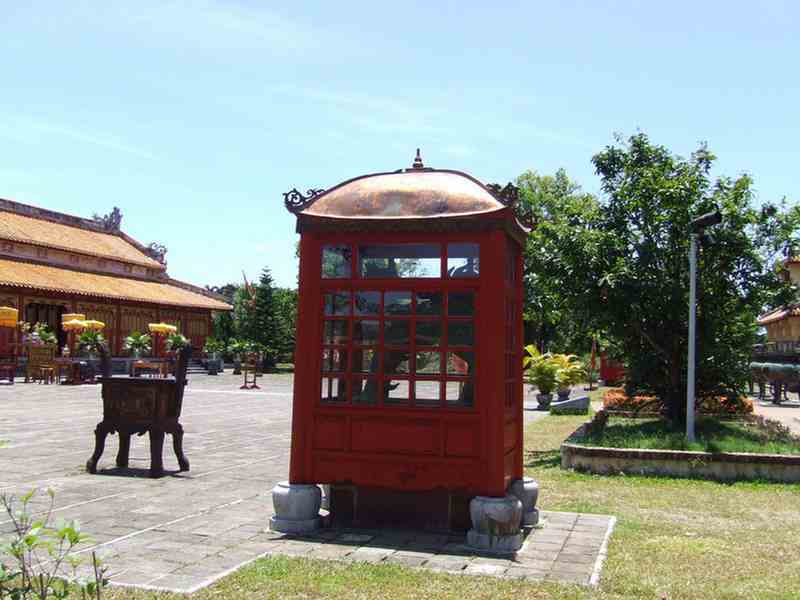
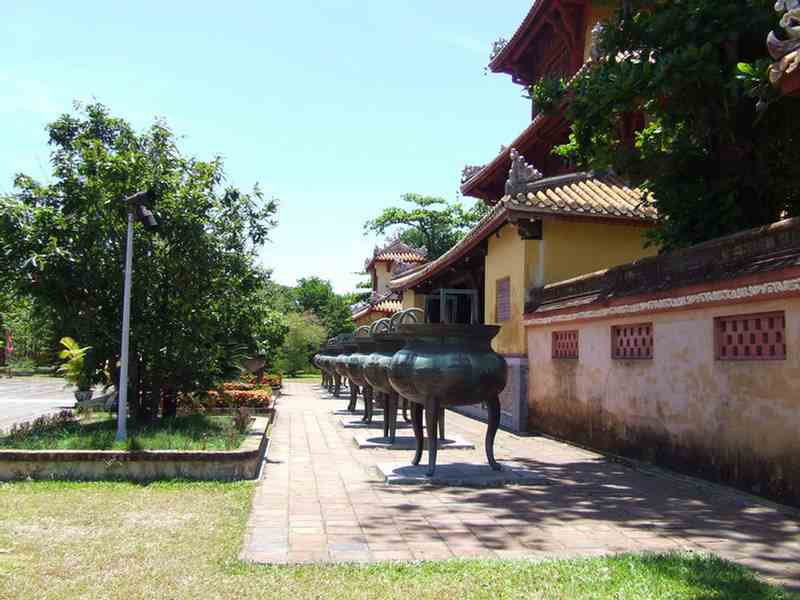
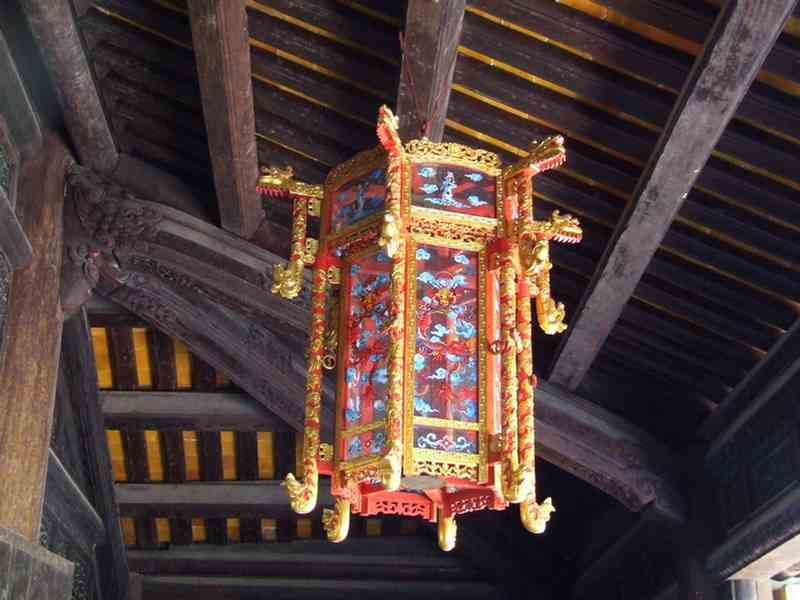
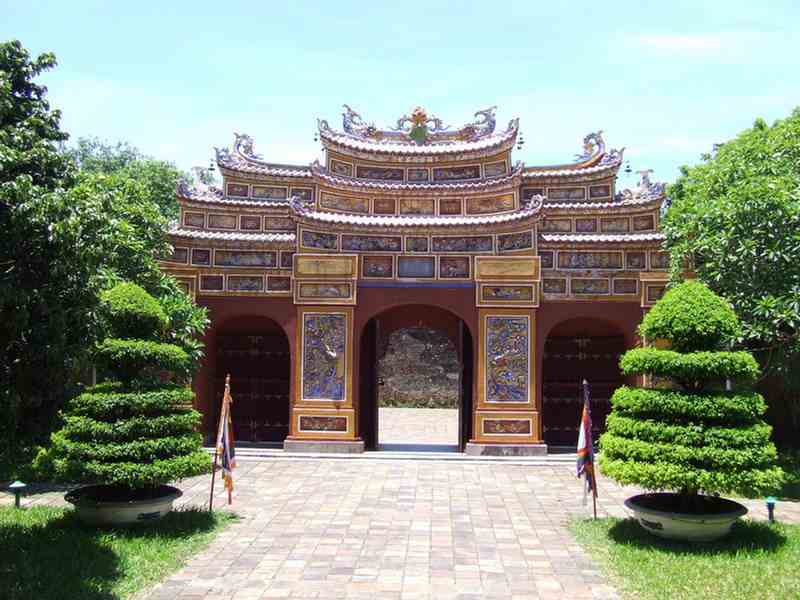
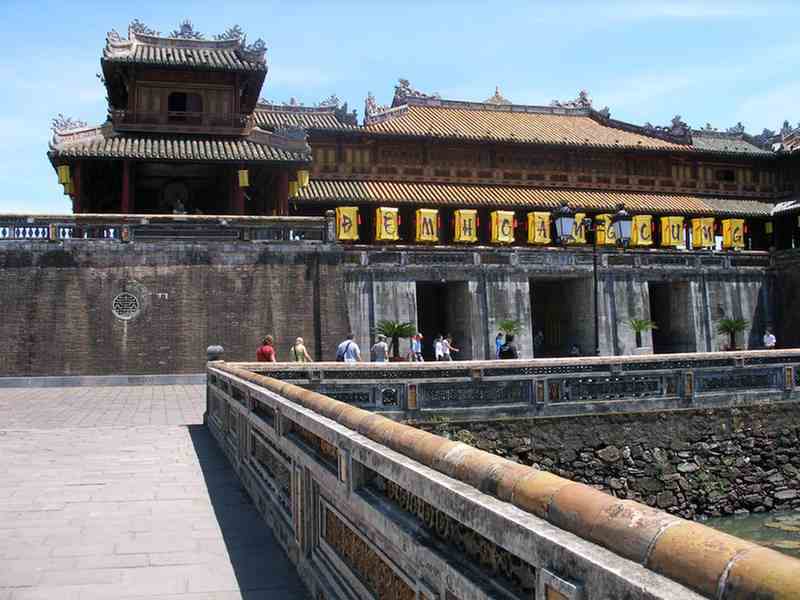
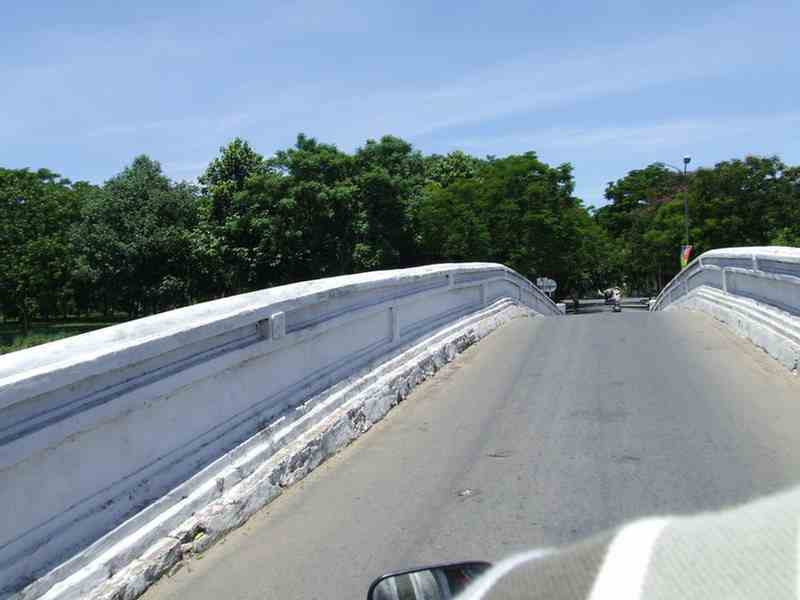
Next stop was at Thien Mu Pagoda. An octagonal pagoda, it is one of the most famous structures in Vietnam.
It was founded in 1601.
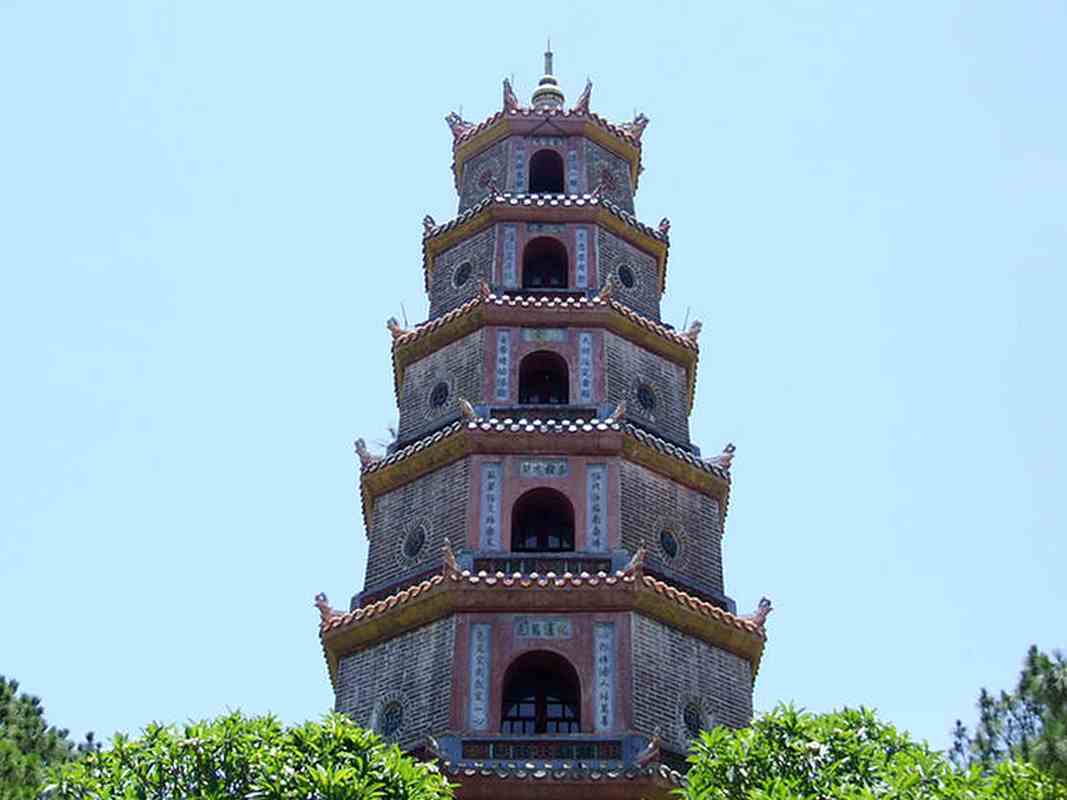
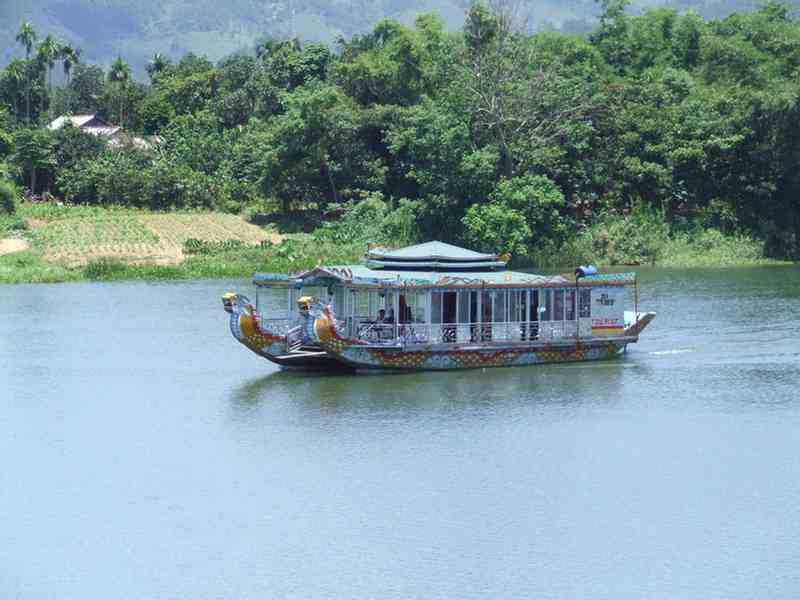
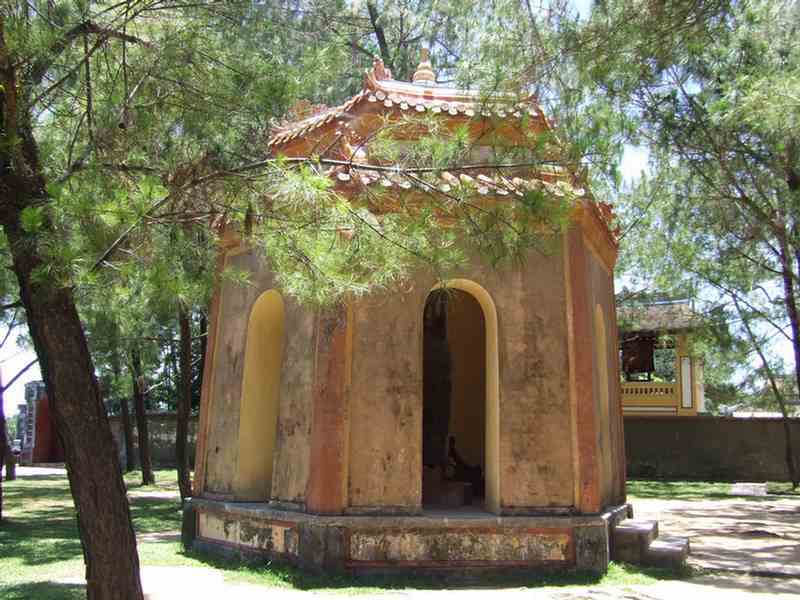
The Thien Mu Pagoda was the home pagoda of Thich Quang Duc, a Vietnamese Mahayana Buddhist monk,
who burned himself to death at a busy Saigon road intersection on June 11, 1963, to protest at the persecution
of Buddhists by South Vietnam's administration of President Ngo Dinh Diệm.
Photos of his self-immolation were circulated widely across the world
and brought attention to the policies of the Diệm regime.
The partly burnt car, an Austin, that he drove down from the pagoda is on display.
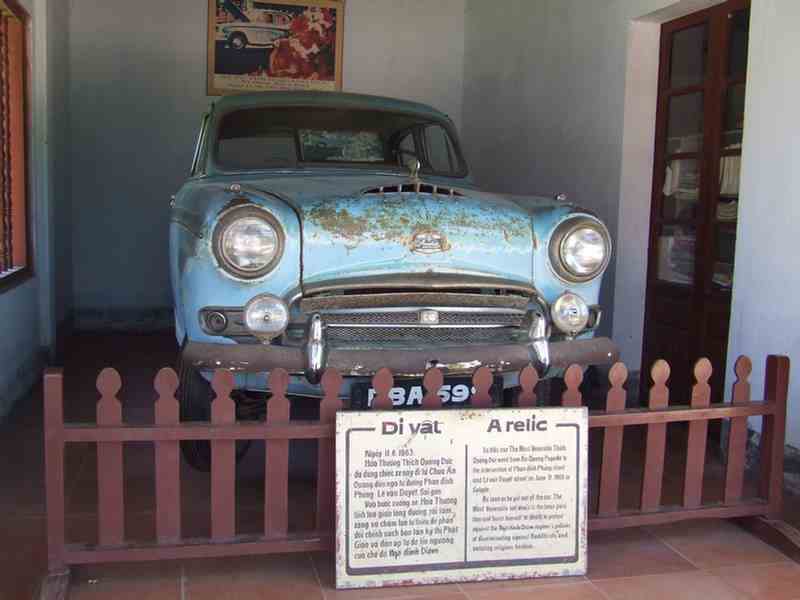
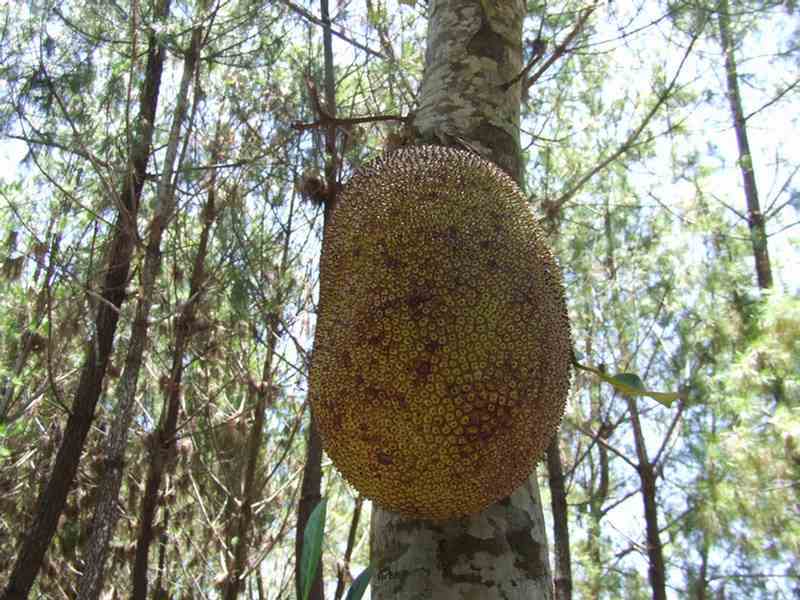
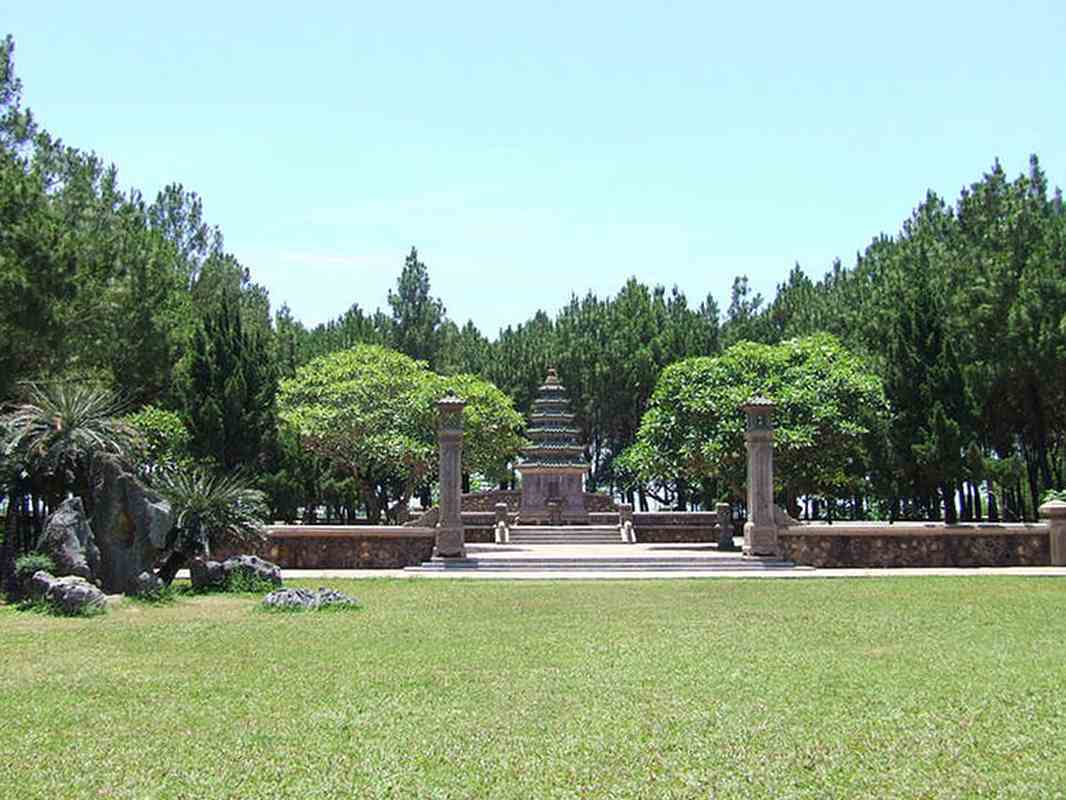
We rode on a narrow laned-bridge over the Perfume River and along narrow tracks in the woods.
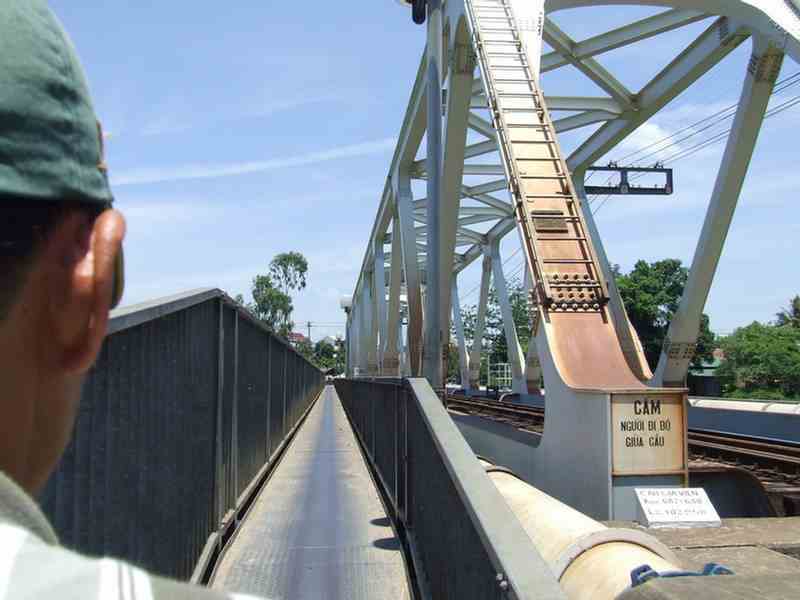
Next stop was at Ho Quyen, a colosseum-like structure, where fights between elephants and tigers were put on
for the "entertainment" of the royals and the mandarins.
Originally the fights were held on open ground in front of the Citadel, but after a tiger attacked Minh Mang,
the second emperor of the Nguyen Dynasty, they were held in this arena from 1830 until the last fight in 1904.
The tigers (representing the "baddies") had their claws clipped, their teeth pulled out and their nose hairs burnt,
so that the elephants (representing the "goodies") always won.
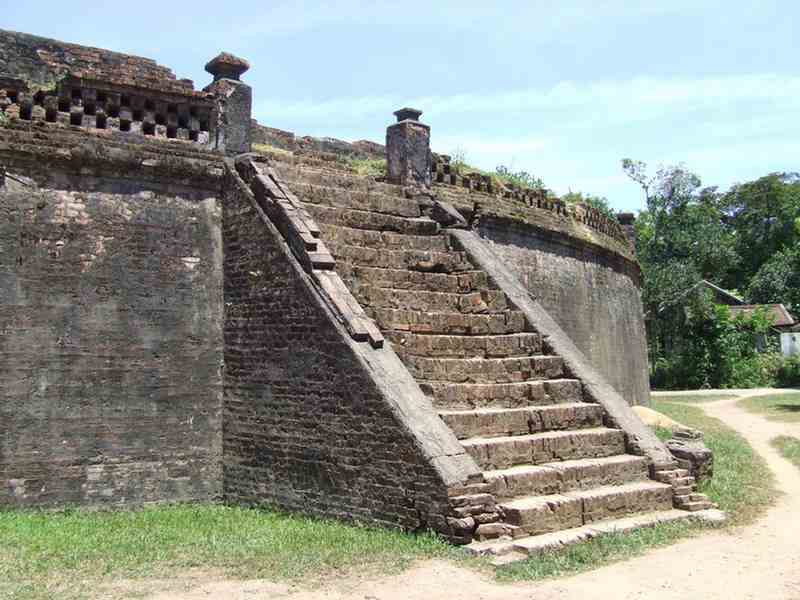
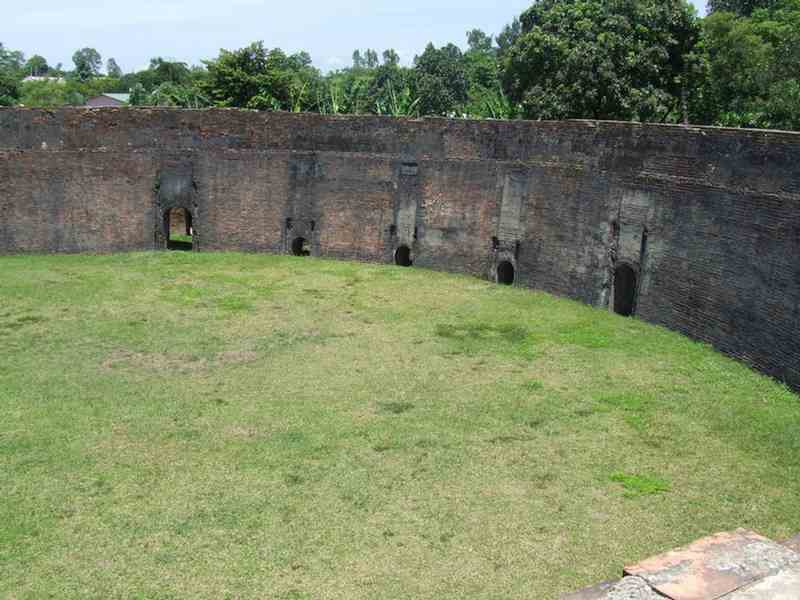
You could see the tiger claw marks in the stone sides of their cages.
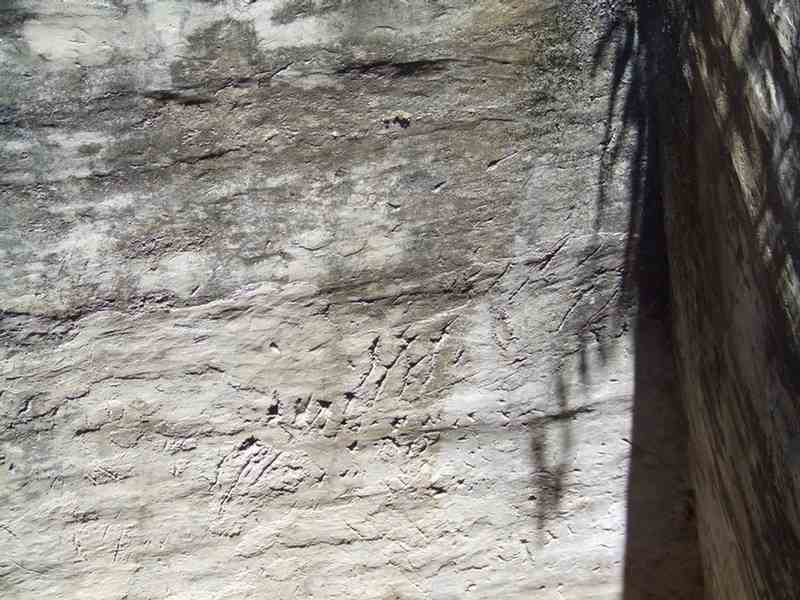
We had a vegetarian lunch with cold lemon drinks at a nuunery.
There were about 15 vegetarian dishes to choose from.
Some of us had a 20 minute catnap on the polished benches.
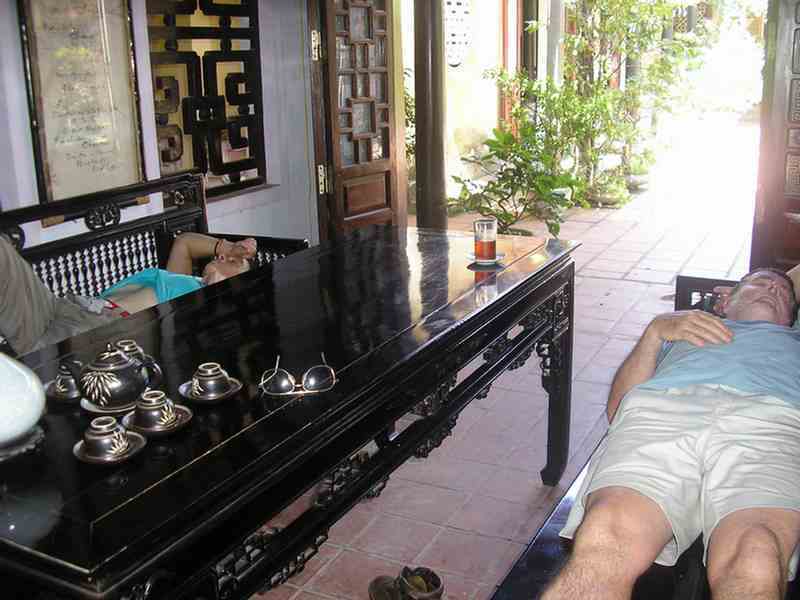
After lunch we stopped of at an incense-stick making stall at the side
of the road and tried our hand at making them.
They used a mixture of cinnamon and sandalwood.
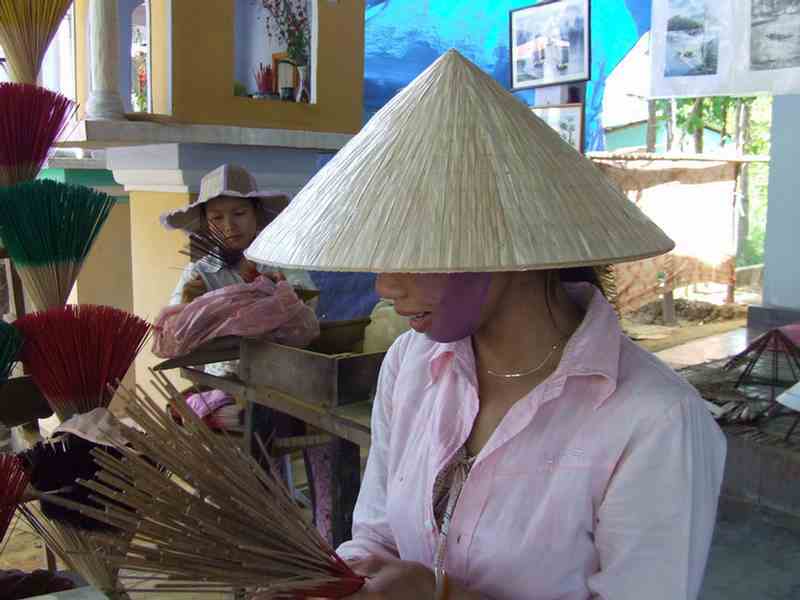
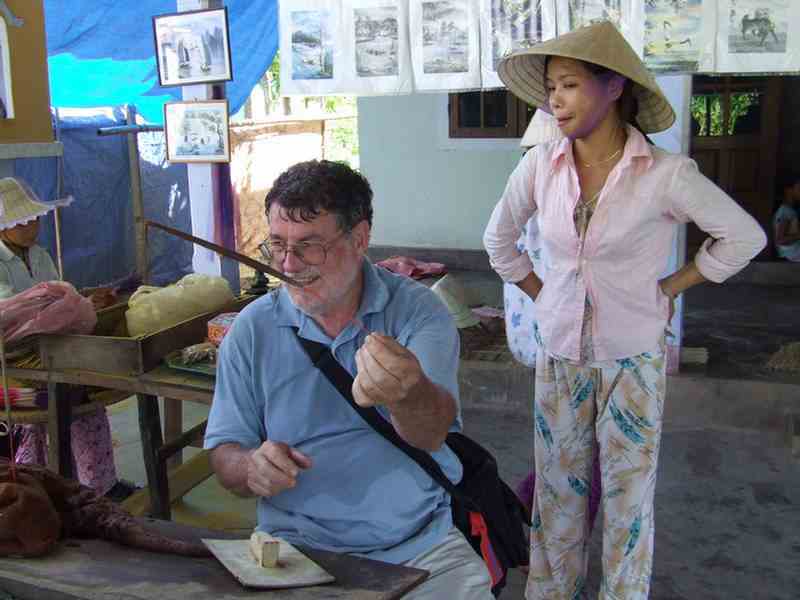
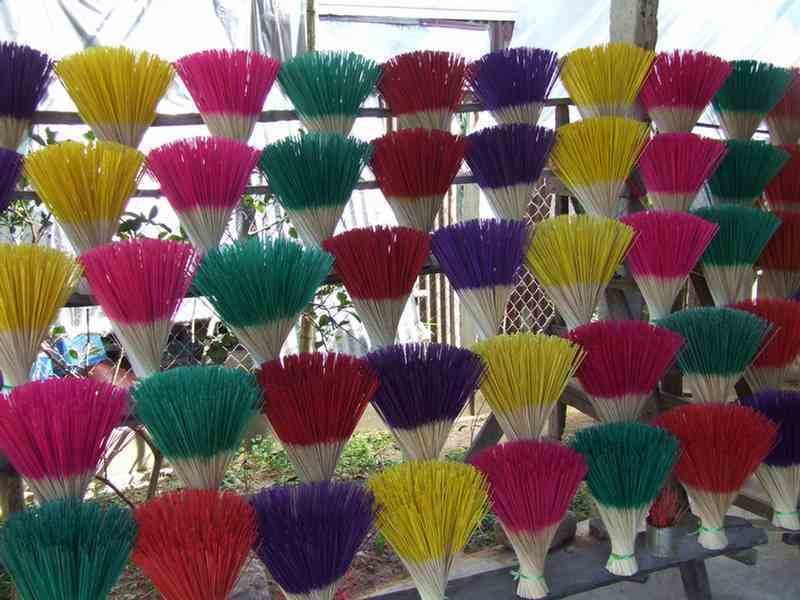
Next stop was at a high spot with a picturesque view over the Perfume River,
a strategic spot in the Vietnam war.
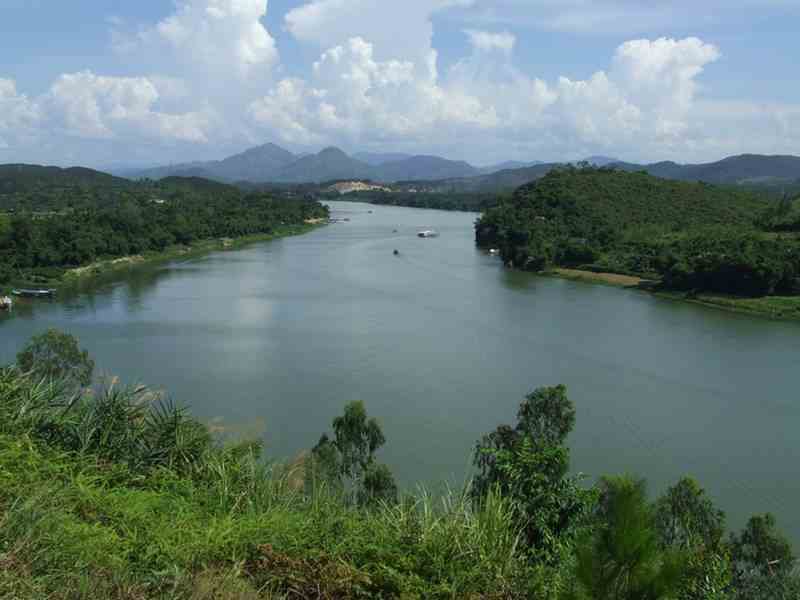
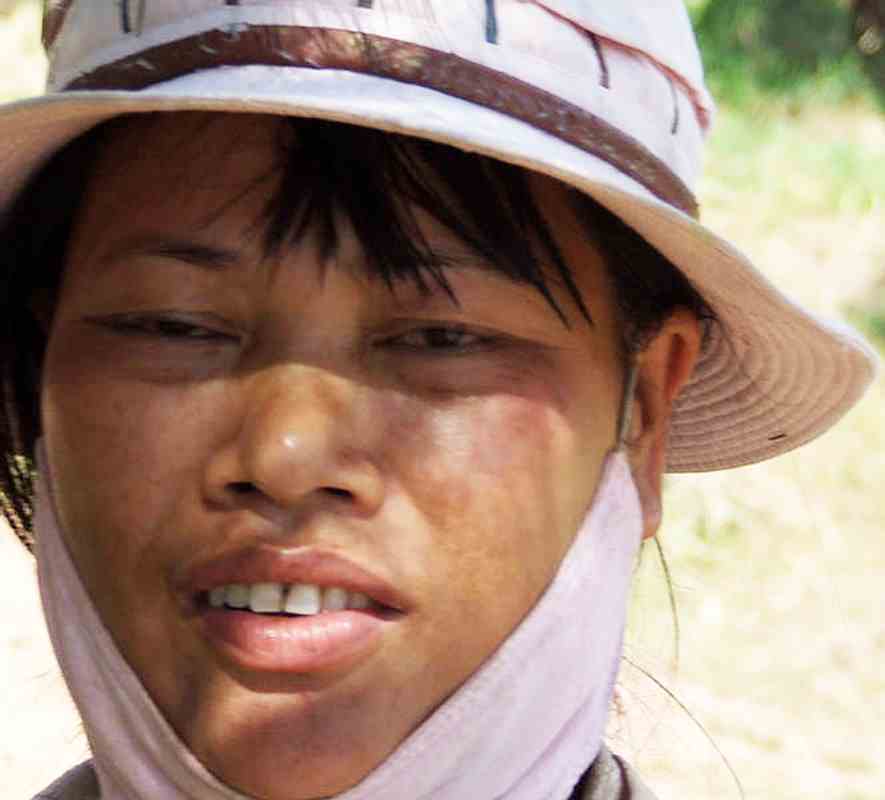
Thong Bao - the Royal Tombs of Emperor Tu Duc
Emperor Tu Duc was the fourth emperor of the Nguyen Dynasty of Vietnam and reigned from 1847-1883,
known for his staunch Confucianism and opposition to foreigners and innovation.
He oppressed all foreigners in Vietnam, especially the Christian community, calling their religion a "perverse doctrine".
The Christian mandarin Nguyen Truong To, tried to convince Tu Duc that this was a suicidal policy, but he did not listen,
confident that France was too involved with the chaos in Europe in 1848 to respond, but he was mistaken.
France responded with a large military expeditionary force and attacked up from southern Vietnam.
The Nguyen army fought bravely for some time, but their antiquated weapons and tactics were no match for the French,
who suffered more from the climate and disease than from enemy resistance. With French forces moving closer against
him, Tu Duc called upon his Chinese over-lord, the Qing Emperor, for help and so ensued the Sino-French War.
The fighting ended with France victorious and China gave up their position as feudal master of Vietnam and
recognized France as the ruling power over the region.
Emperor Tự Đức did not live to see the worst effects of colonialism on his country, but he is often regarded as the
last Emperor of Vietnam, since he was the last to rule independently.
A case of smallpox left him impotent so he had no children despite a huge harem of wives he kept in his palace.
According to legend, he died in 1883 cursing the French with his dying breath.
His Royal Tombs complex was a massive building project which he undertook long before his death.
Built on the Perfume River between 1864 and 1867, the complex contains gardens, pavilions,
and a temple used earlier as a palace.
He visited there for recreation (fishing especially), for meditation, and to write, as well as to meet
with other writers and intellectuals.
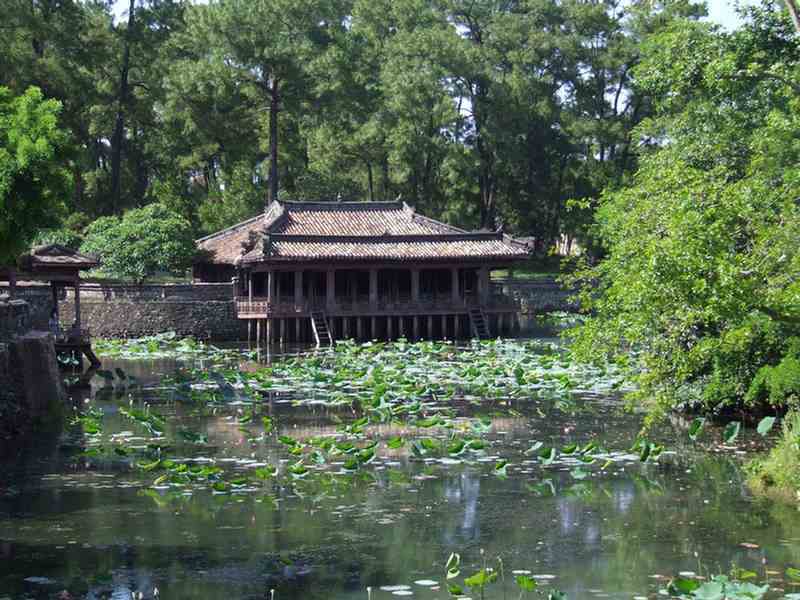
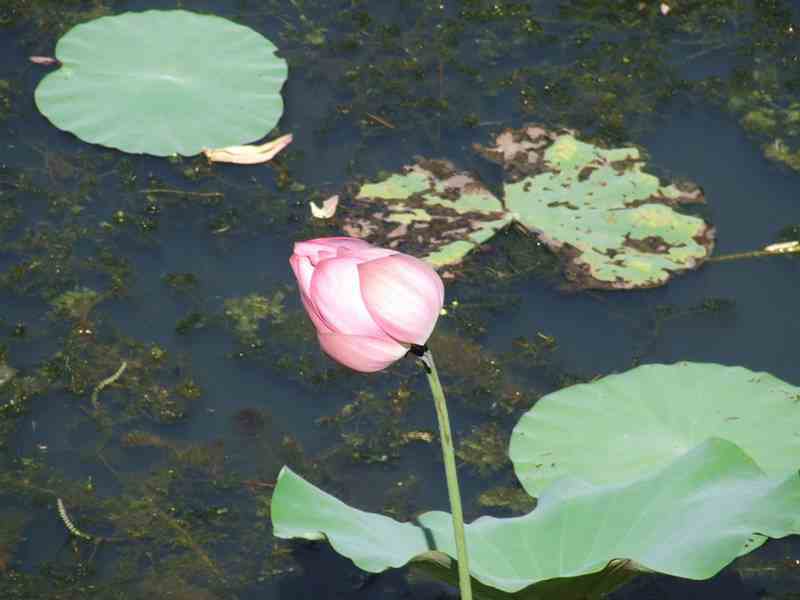
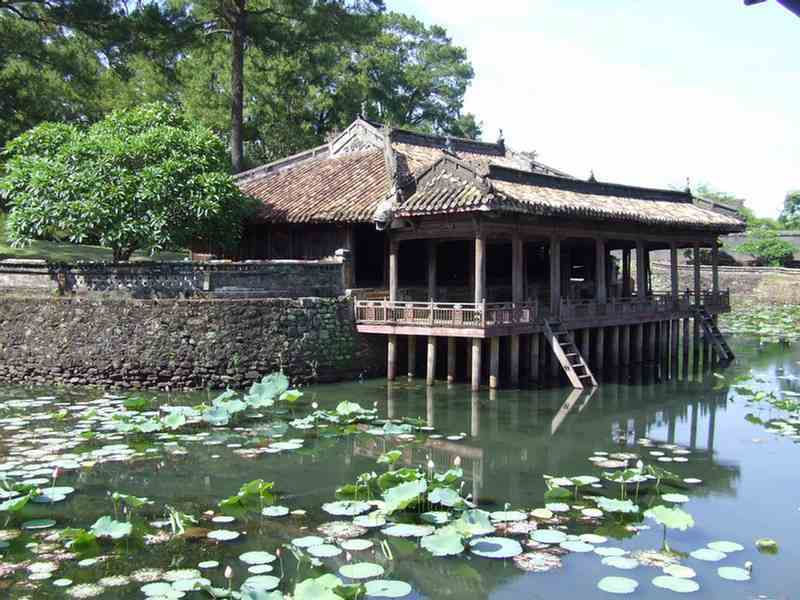
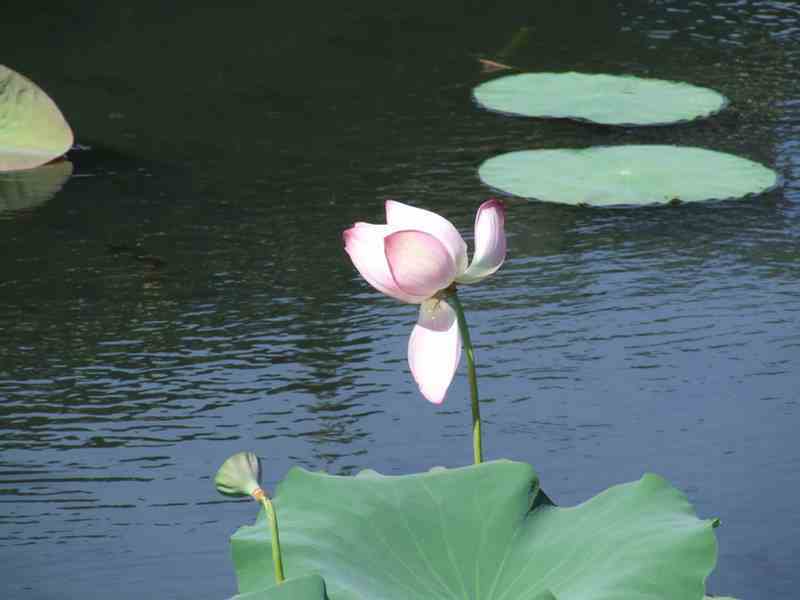
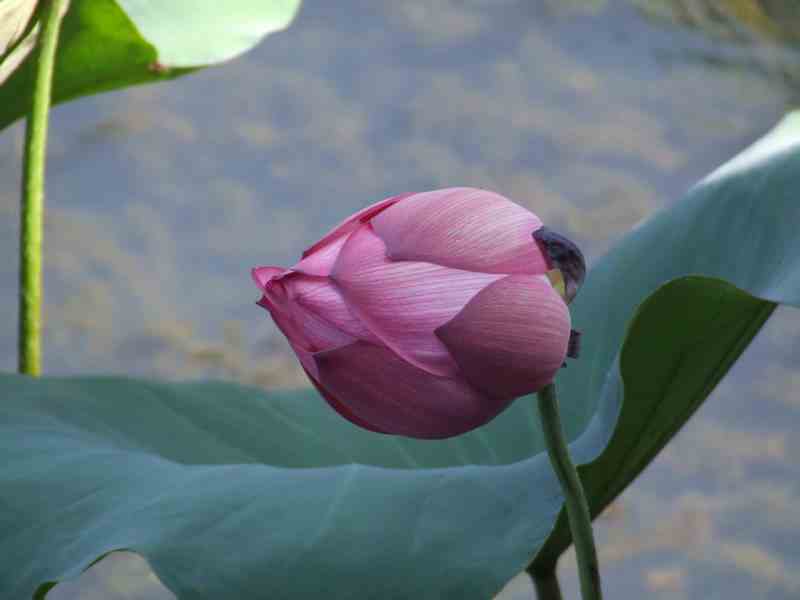
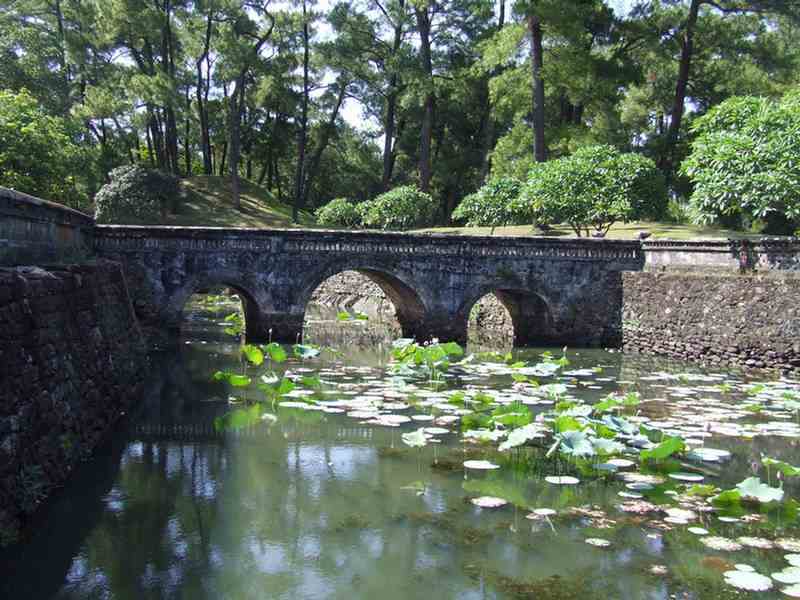
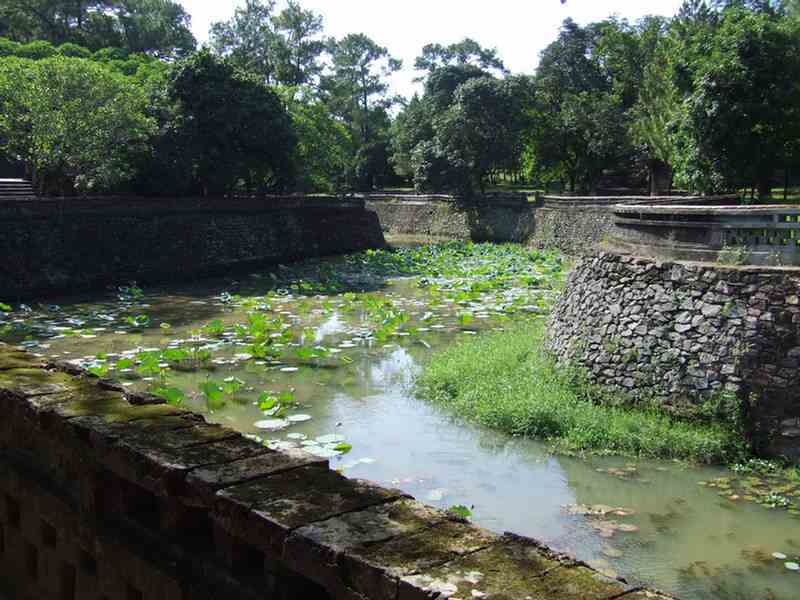
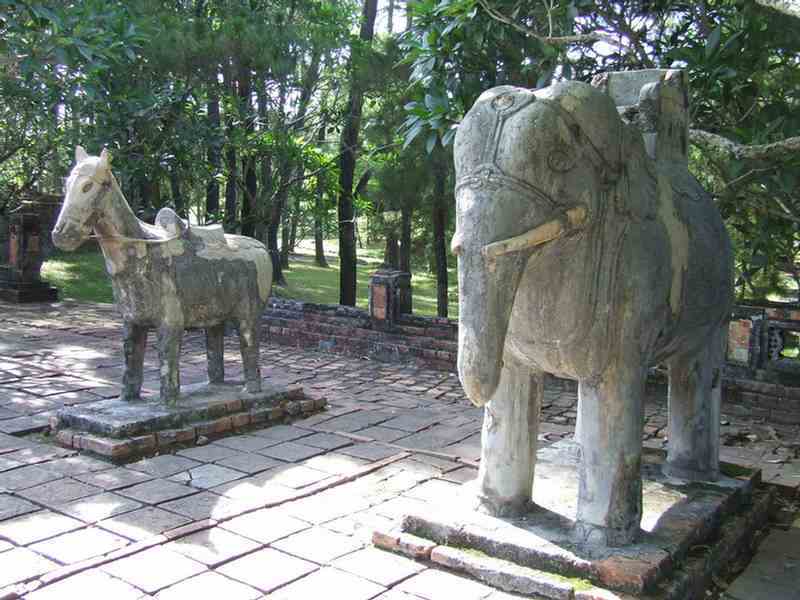
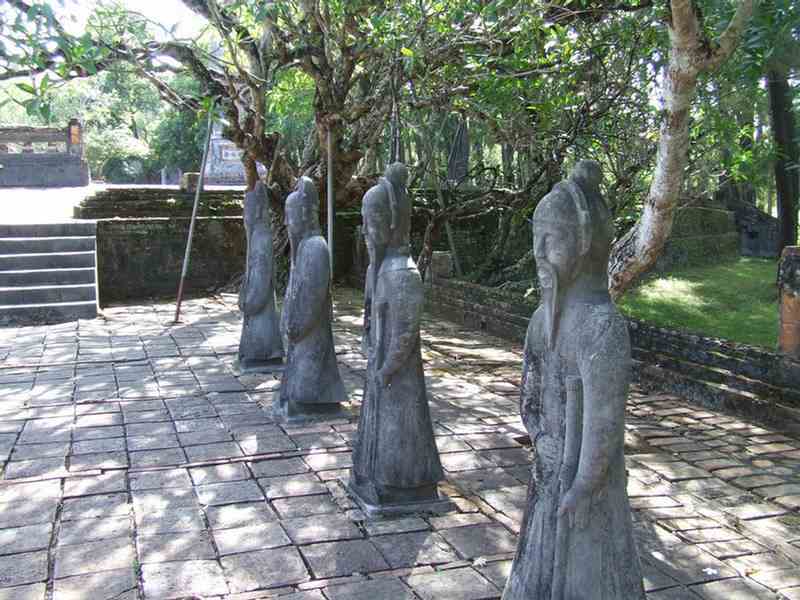
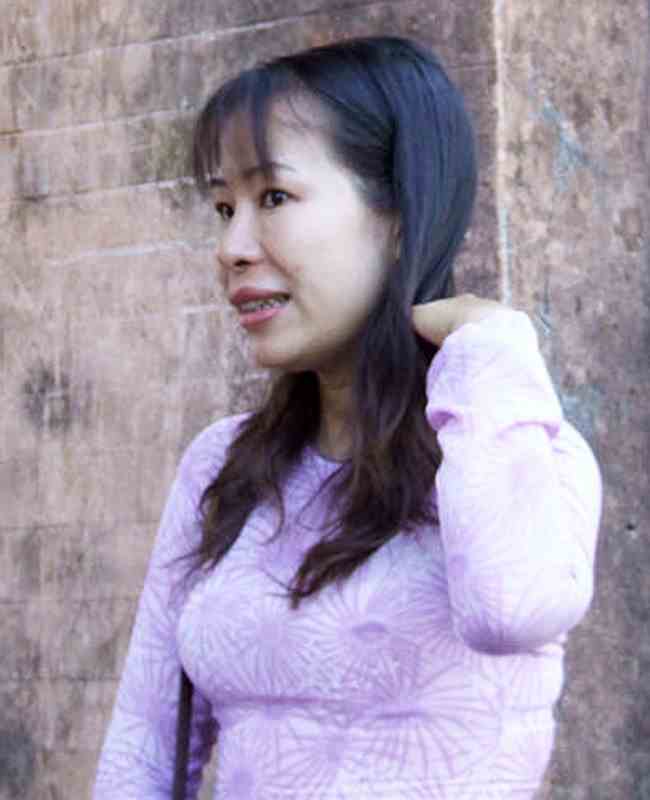
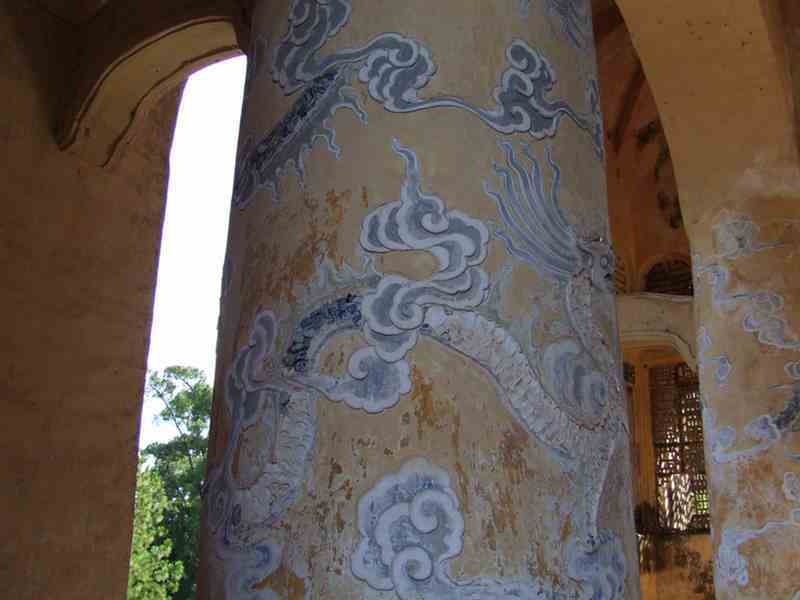
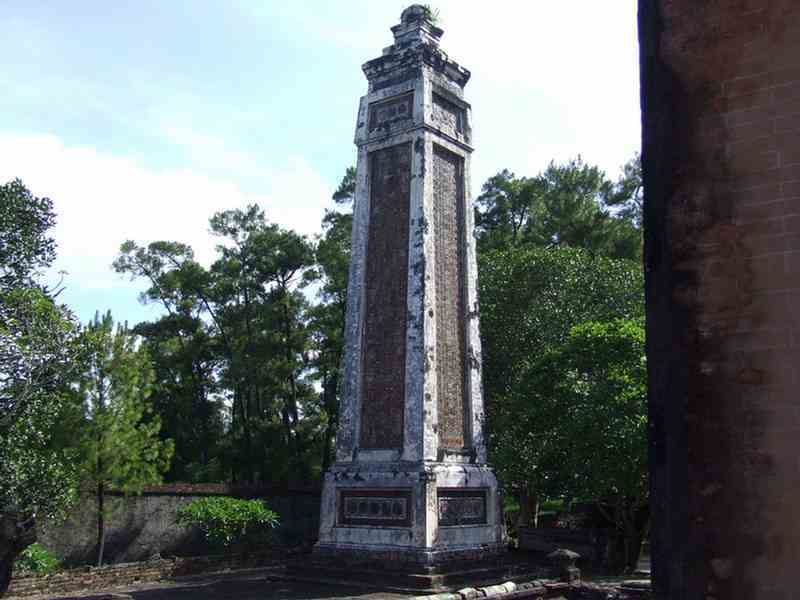
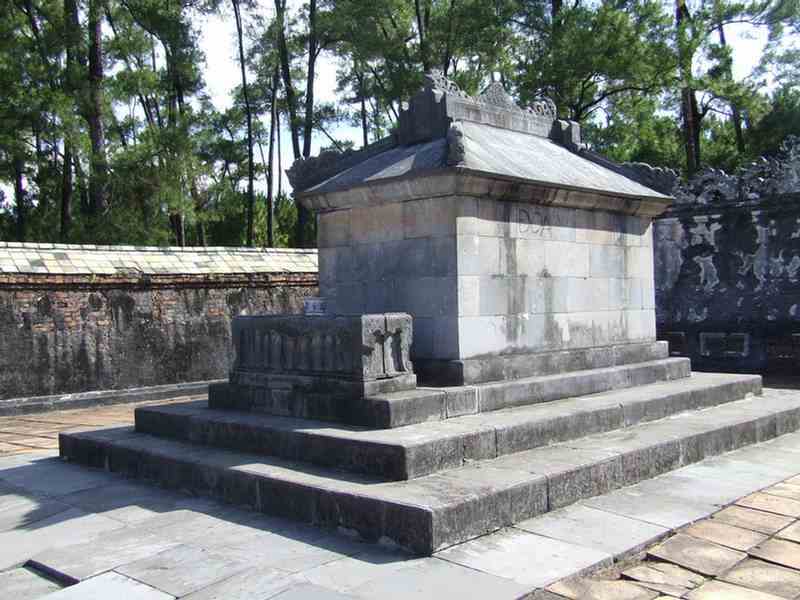
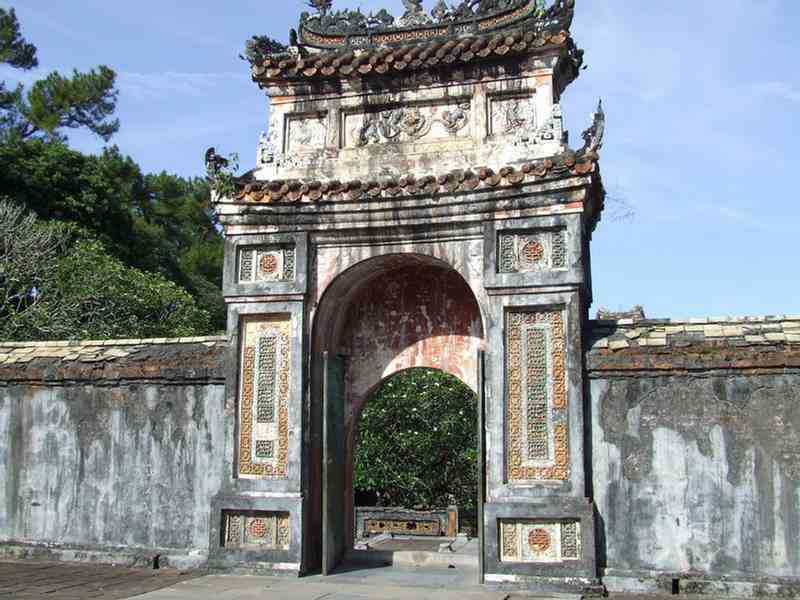
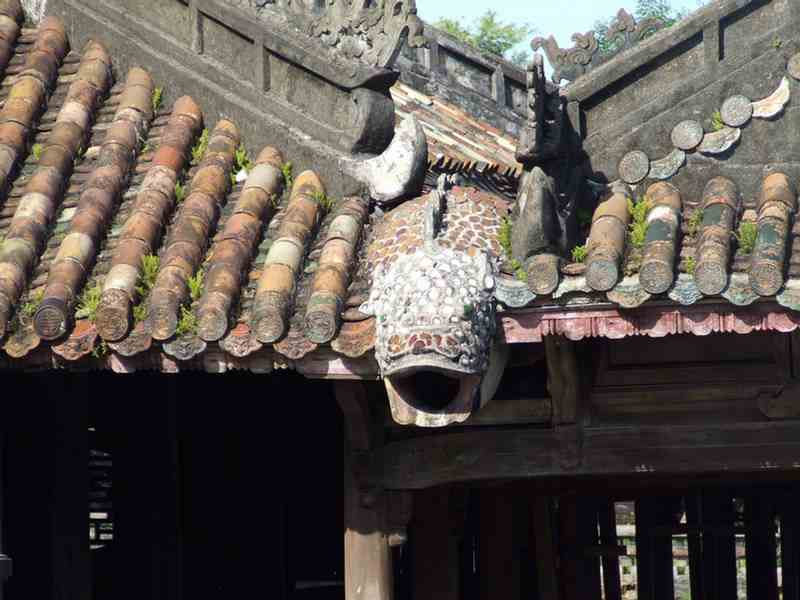
We had a competion to see who could photograph the most bizzare object on the back of a motorcycle.
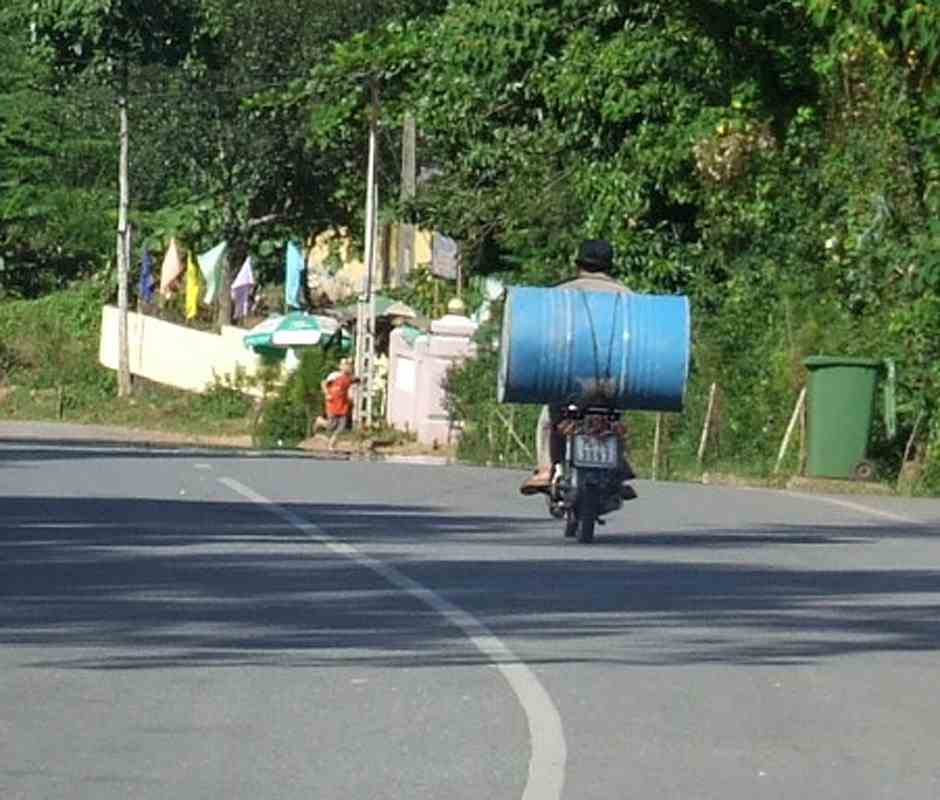
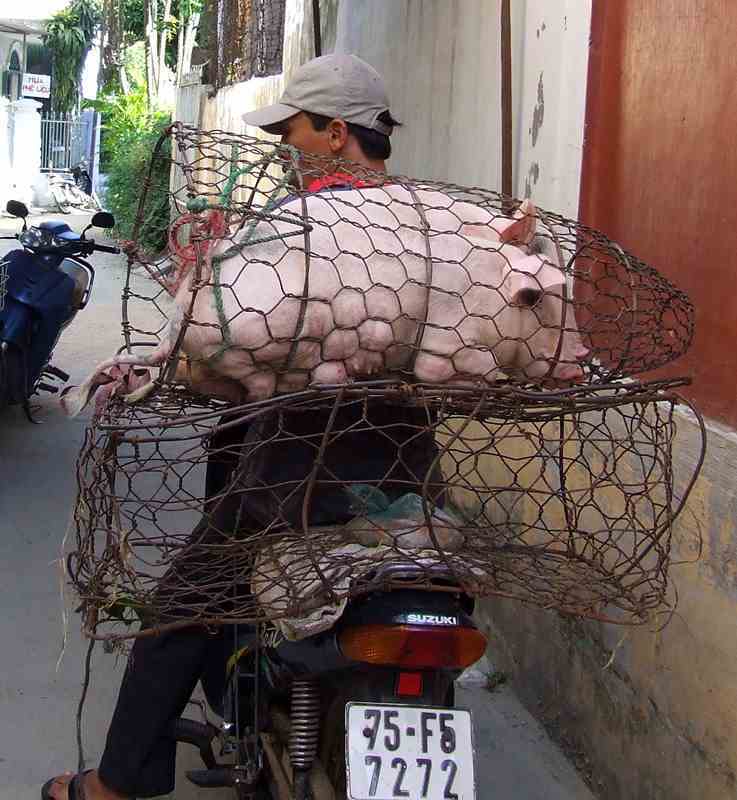
We called in to see a pleasant young lady with one hand making Vietnamese-style conical hats out of rattan.
A newspaper cut-out of Hue's symbol (the 5-span bridge over the Perfume River)
formed a silluotette when held up to the light.
Next morning we went for a boat ride on the Perfume River.
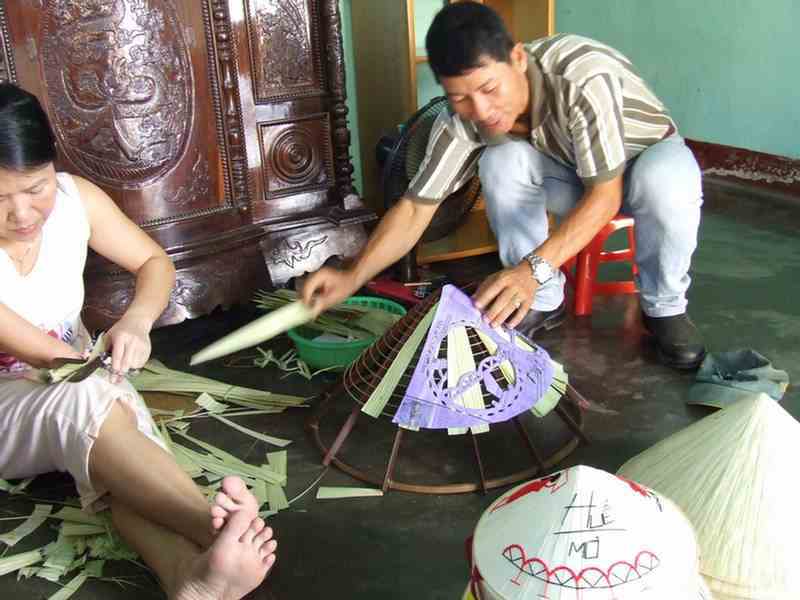
The Thanh Toan Covered Bridge
The bridge was built in 1776. The middle part has a small temple used for worship Mrs Tran Thi Dao,
who was from Thanh Thuy Chanh village and donated money to build this bridge.
Next morning we went for a boat ride on the Perfume River.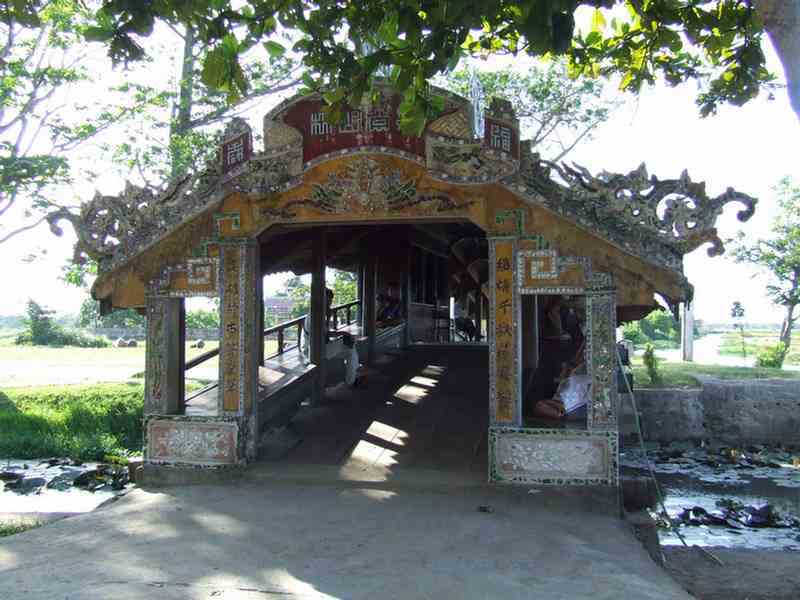
Next morning we went for a boat ride on the Perfume River.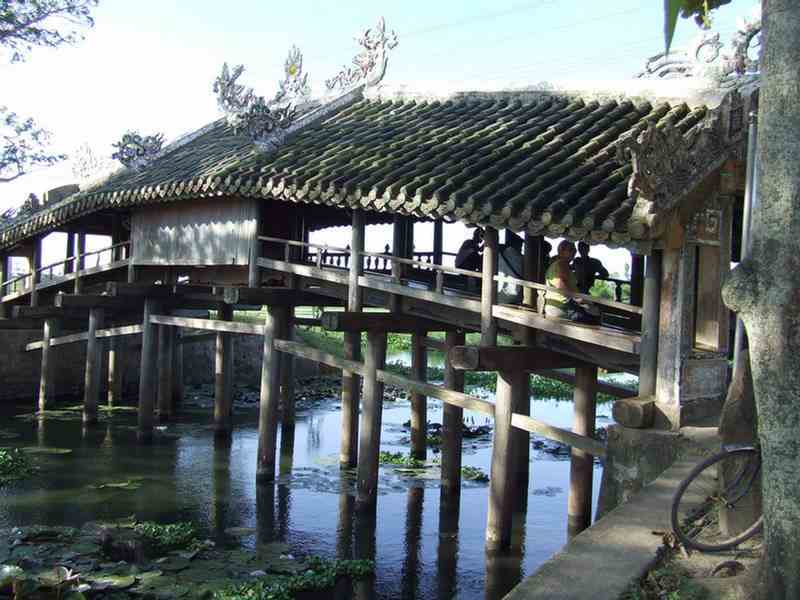
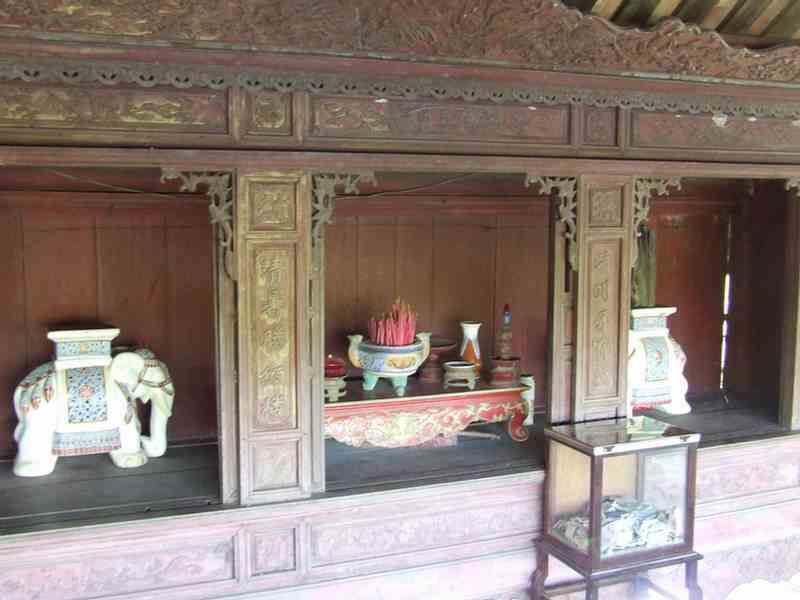
On the bridge there was an old lady (80+) who told our fortunes for 50c each.
"Your wife loves you very much. Lots of young ladies and young women love you. You will live to 91.
You have worked hard in your life. You have 3 children."
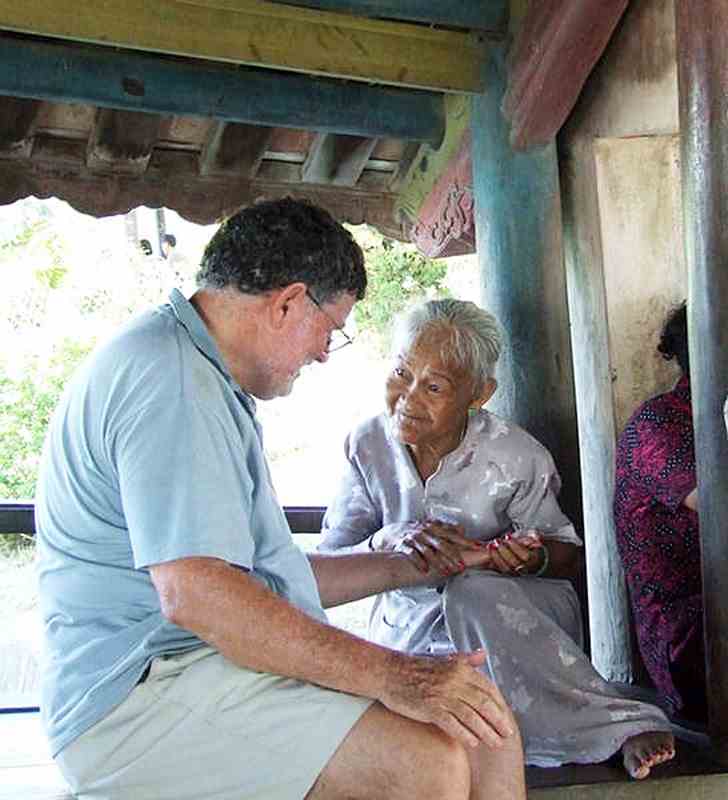
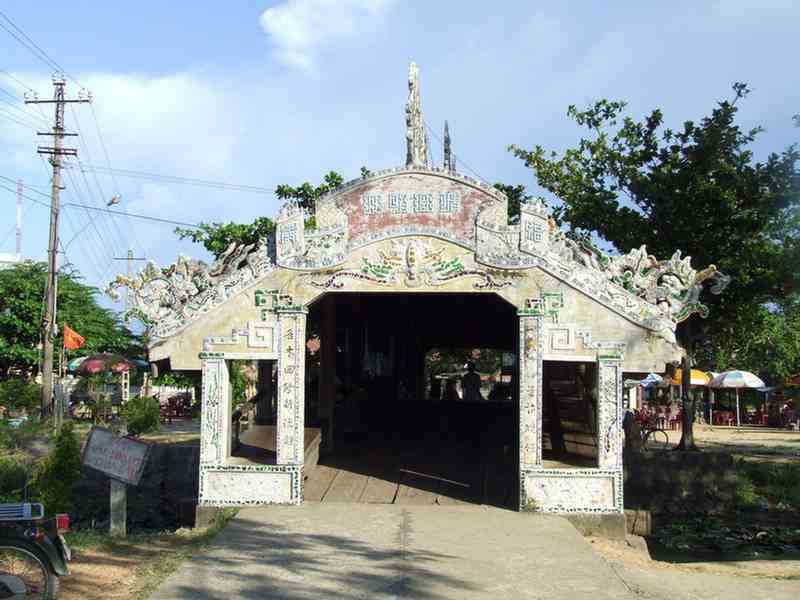
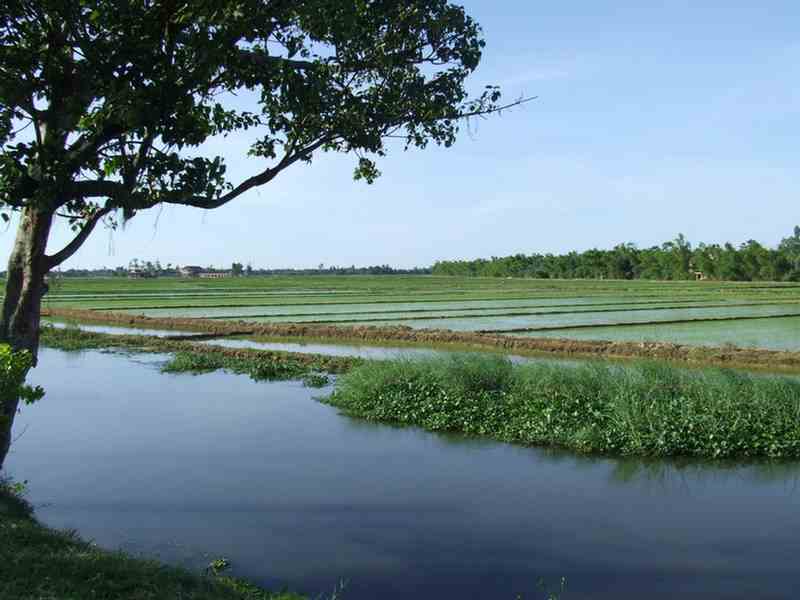
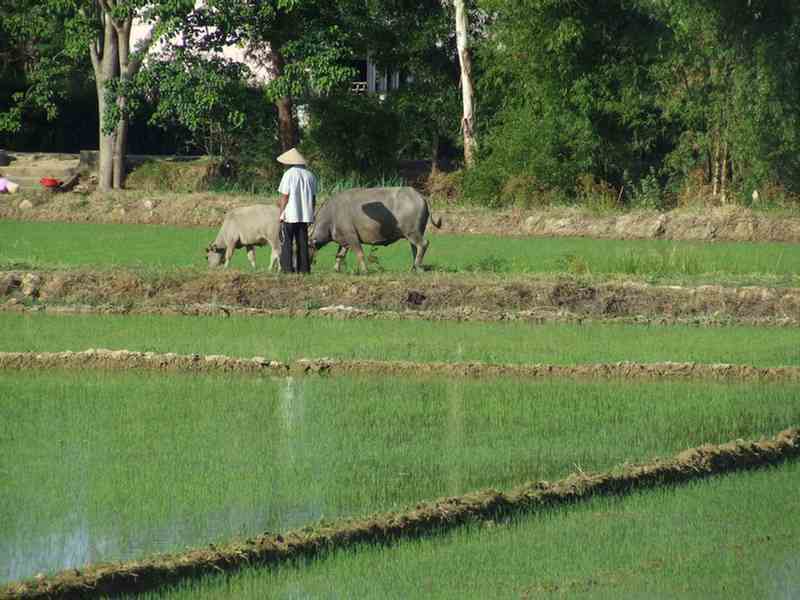
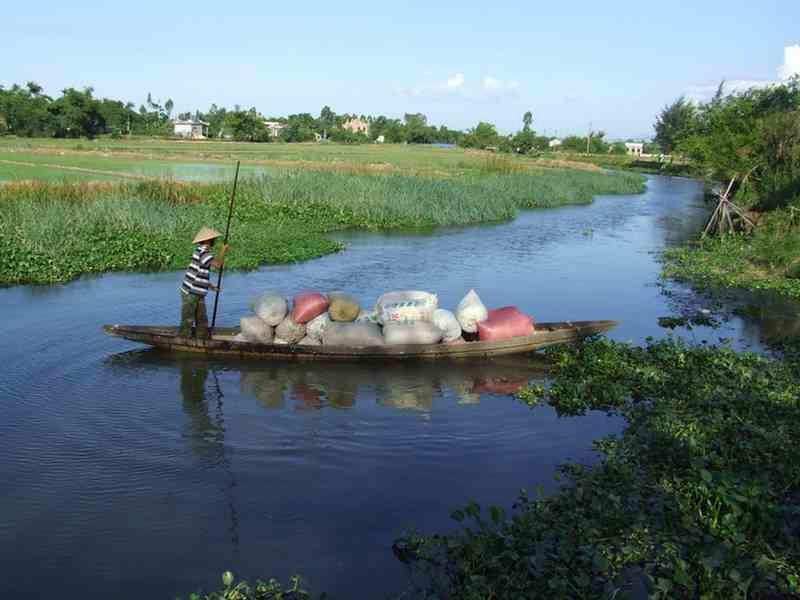
A great tour on the back of a motorcycle.
Next morning we went for a boat ride on the Perfume River.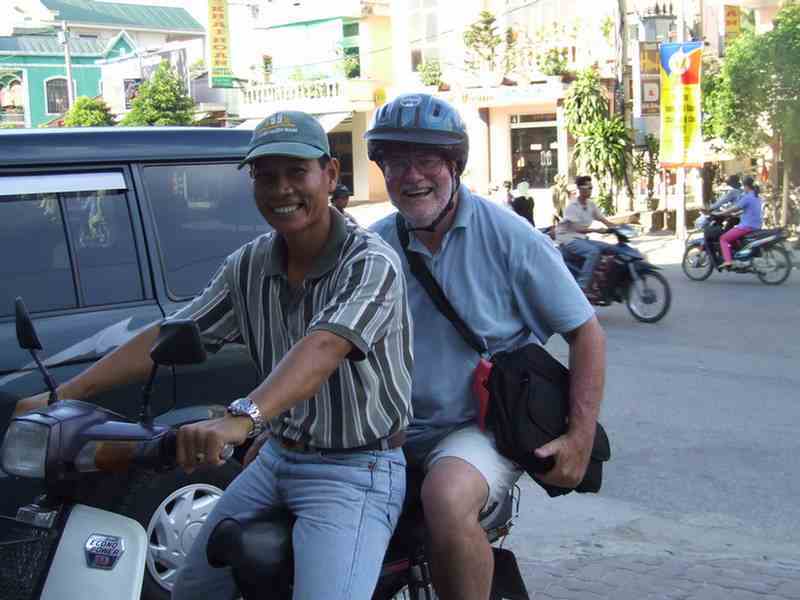
Next morning we went for a boat ride on the Perfume River.
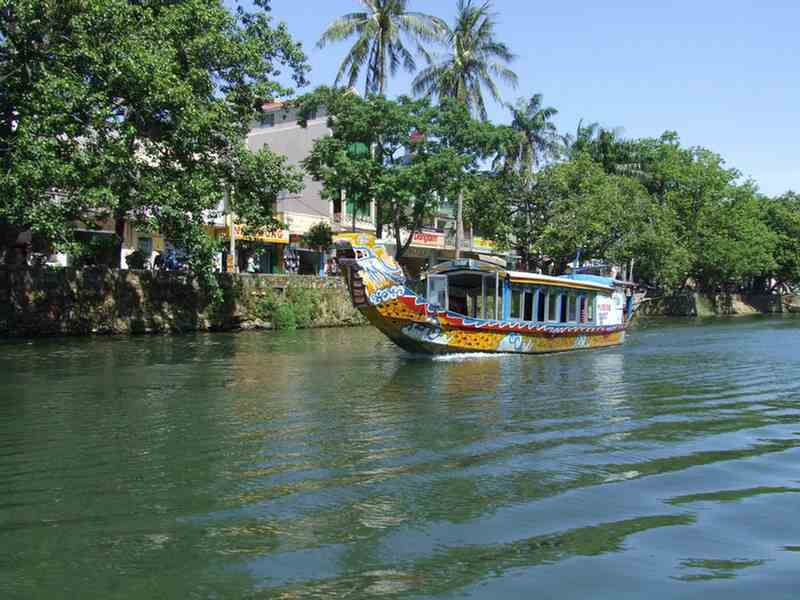
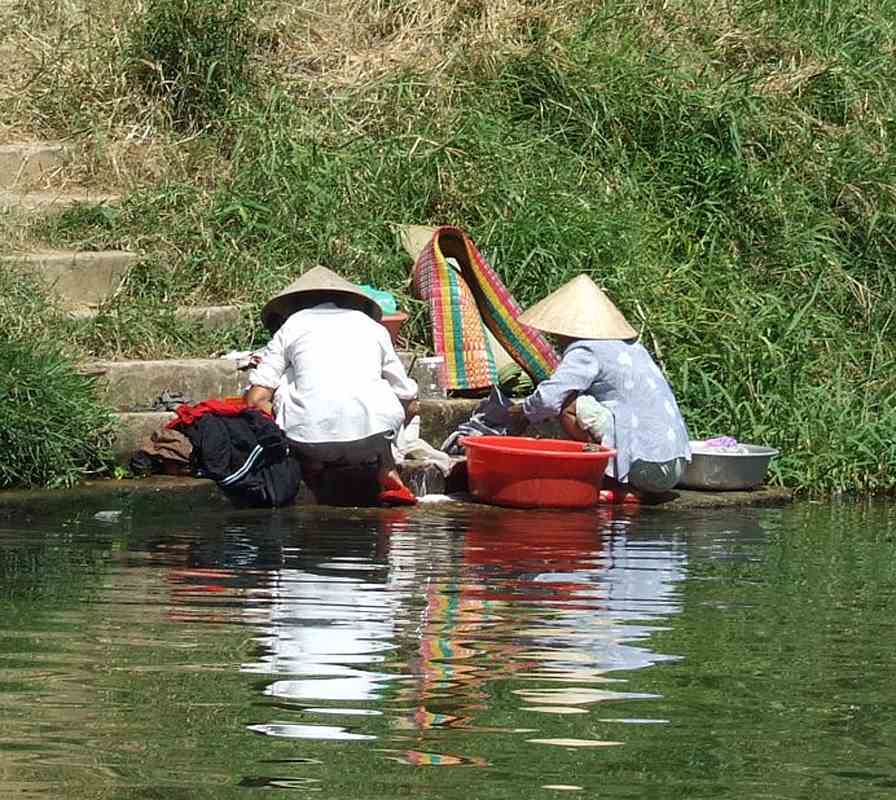
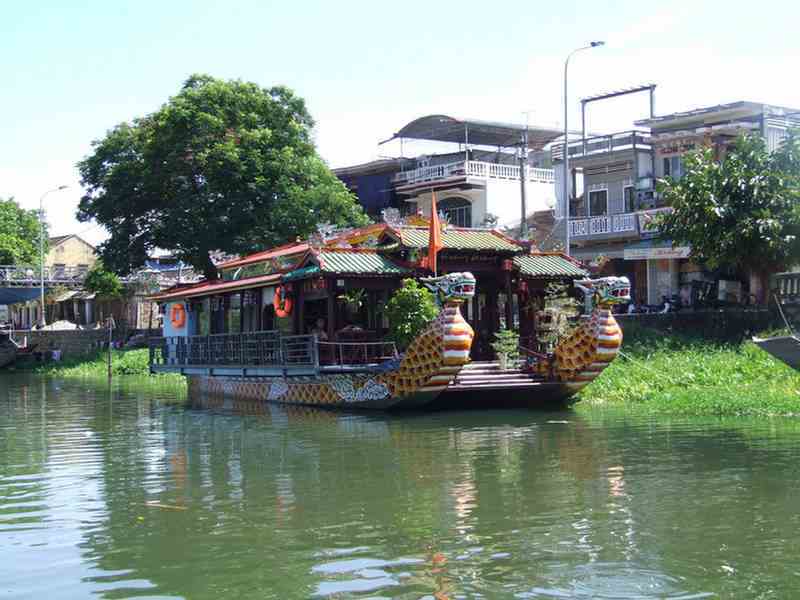
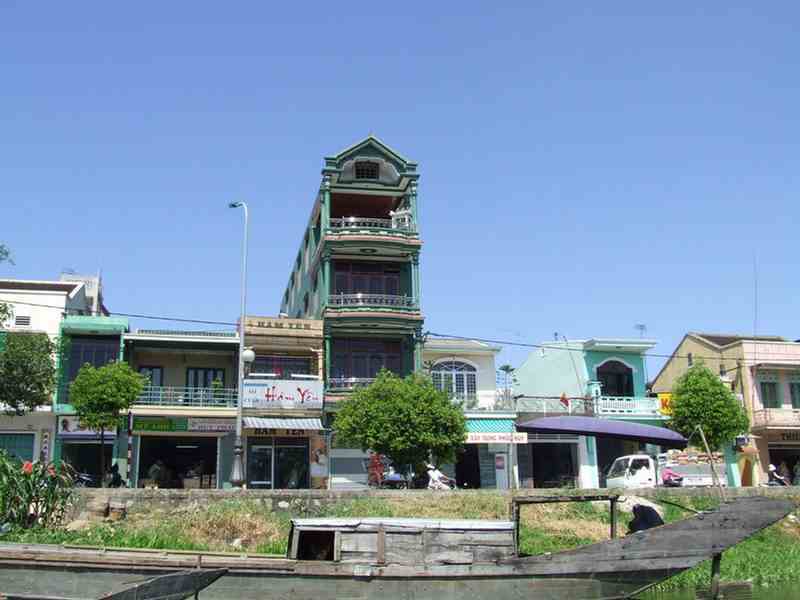
With Andrea, the tour-leader on my IntrepidTravel tour of Indochina.
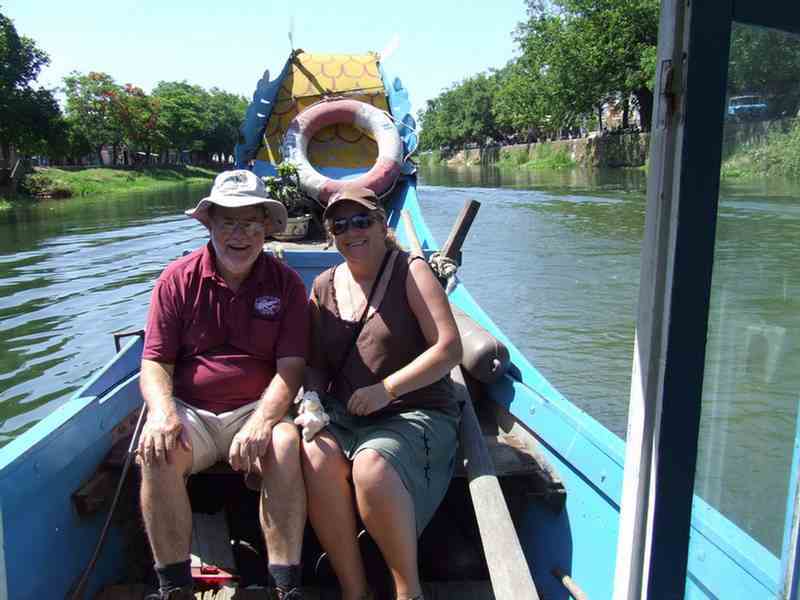
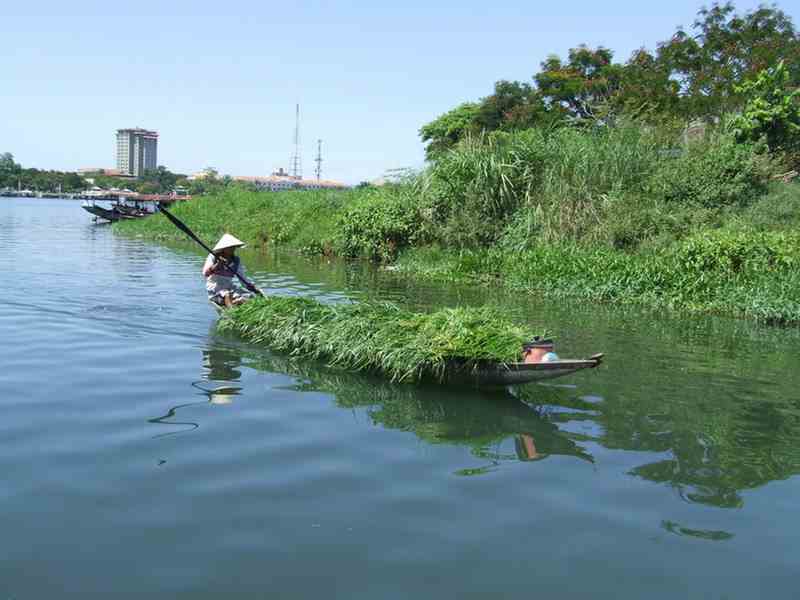
Next morning we went for a boat ride on the Perfume River.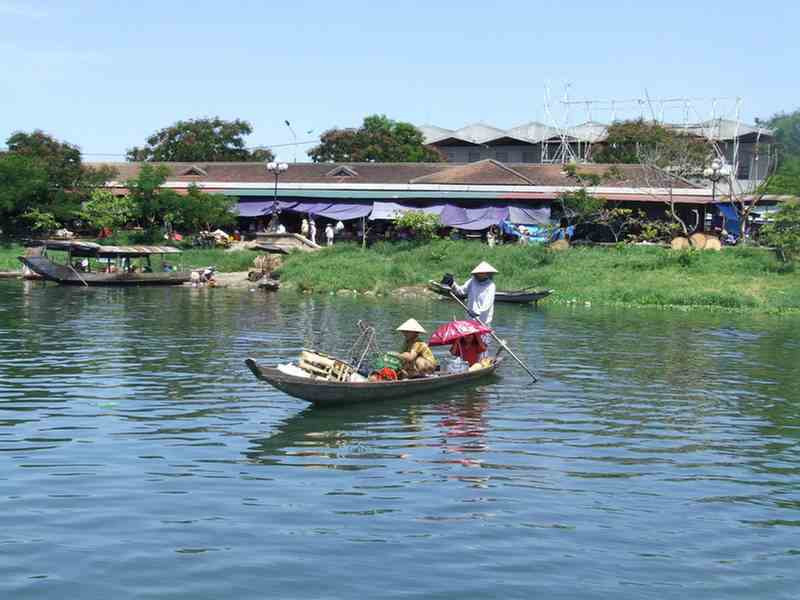
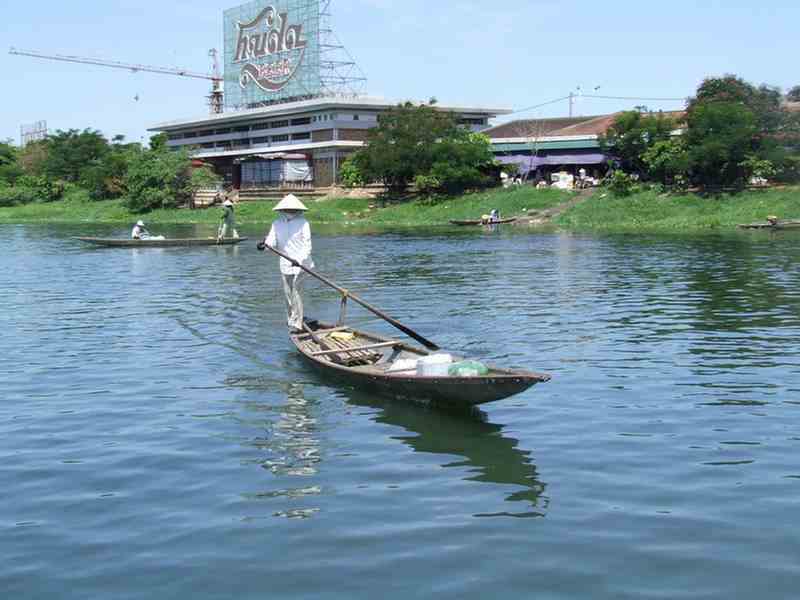
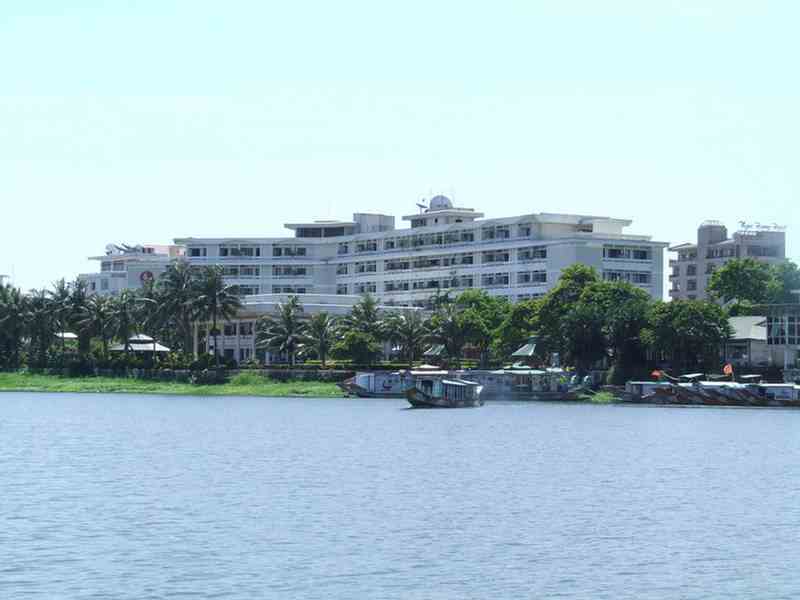
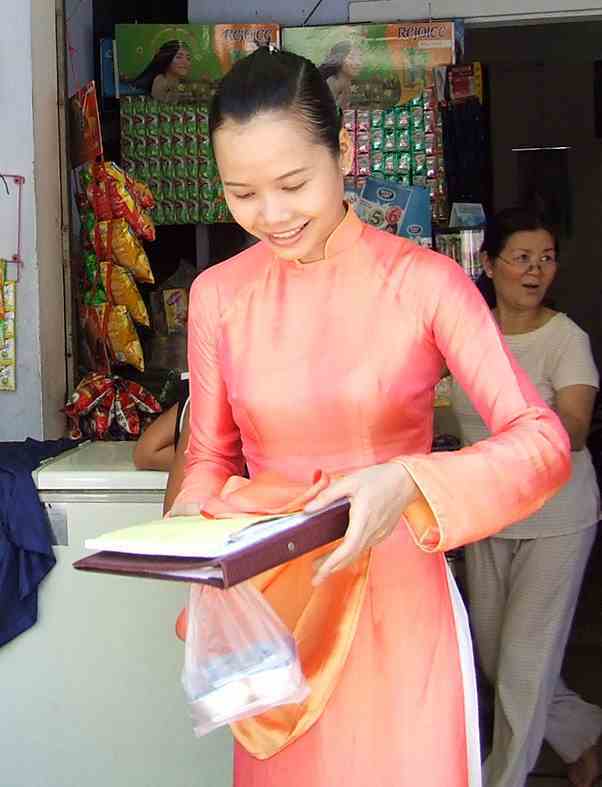
After the cruise we left on a minibus for Hoi An.
I had a 4-week Indochina trip in May-June 2007.
(Melbourne – Bangkok – Thailand – Laos - Vietnam - Cambodia -Thailand – Bangkok - Melbourne)
We travelled by overnight train from Haoi to Hue on my IntrepidTravel tour.
Between 1802 and 1945, Hue was the imperial capital of the Nguyễn Dynasty.
It is another World Heritage Site.
Half an hour after arriving in Hue on the overnight train from Hanoi we were off exploring the sights
as pillion passengers on the back of motorcycles.
I was lucky enough to have the guide, Than, as my rider. He was quite a jovial character.
Next morning we went for a boat ride on the Perfume River.Next morning we went for a boat ride on the Perfume River.



Firstly we went to the Imperial Citadel.
Completed in 1908, this vast complex was the royal residence of the kings of Vietnam.
Like the city of Hue itself, many of the original buildings were destroyed in the Indochina and Vietnam wars.
The area is now under reconstruction. It is a smaller version of the Forbidden City in Beijing, but better decorated.

Hue is intimately connected to the imperial Nguyễn Dynasty, based in Hue, who ruled from 1804 to 1945,
when the Emperor Bao Dai abdicated in favor of Ho Chi Minh's revolutionary government.
The city went through tough times during the Vietnam War, when it was conquered by the Viet Cong and held for 24days,
during which the VC slaughtered around 1,000 people suspected of sympathizing with the South,
and then subject to an American bombing campaign to retake the city.
The Citadel was badly knocked about during fighting between the French and the Viet Minh in 1947,
and again in 1968 during the Tet Offensive, when it was shelled by the Viet Cong and then bombed by the Americans.
As a result, some areas are now only empty fields, bits of walls, and an explanatory plaque.
Other buildings are intact, though, and a few are in sparkling condition.
For the rest, while restoration has been going on for 20 years, there is still quite a long way to go.
































Next stop was at Thien Mu Pagoda. An octagonal pagoda, it is one of the most famous structures in Vietnam.
It was founded in 1601.



The Thien Mu Pagoda was the home pagoda of Thich Quang Duc, a Vietnamese Mahayana Buddhist monk,
who burned himself to death at a busy Saigon road intersection on June 11, 1963, to protest at the persecution
of Buddhists by South Vietnam's administration of President Ngo Dinh Diệm.
Photos of his self-immolation were circulated widely across the world
and brought attention to the policies of the Diệm regime.
The partly burnt car, an Austin, that he drove down from the pagoda is on display.



We rode on a narrow laned-bridge over the Perfume River and along narrow tracks in the woods.

Next stop was at Ho Quyen, a colosseum-like structure, where fights between elephants and tigers were put on
for the "entertainment" of the royals and the mandarins.
Originally the fights were held on open ground in front of the Citadel, but after a tiger attacked Minh Mang,
the second emperor of the Nguyen Dynasty, they were held in this arena from 1830 until the last fight in 1904.
The tigers (representing the "baddies") had their claws clipped, their teeth pulled out and their nose hairs burnt,
so that the elephants (representing the "goodies") always won.


You could see the tiger claw marks in the stone sides of their cages.

We had a vegetarian lunch with cold lemon drinks at a nuunery.
There were about 15 vegetarian dishes to choose from.
Some of us had a 20 minute catnap on the polished benches.

After lunch we stopped of at an incense-stick making stall at the side
of the road and tried our hand at making them.
They used a mixture of cinnamon and sandalwood.



Next stop was at a high spot with a picturesque view over the Perfume River,
a strategic spot in the Vietnam war.


Thong Bao - the Royal Tombs of Emperor Tu Duc
Emperor Tu Duc was the fourth emperor of the Nguyen Dynasty of Vietnam and reigned from 1847-1883,
known for his staunch Confucianism and opposition to foreigners and innovation.
He oppressed all foreigners in Vietnam, especially the Christian community, calling their religion a "perverse doctrine".
The Christian mandarin Nguyen Truong To, tried to convince Tu Duc that this was a suicidal policy, but he did not listen,
confident that France was too involved with the chaos in Europe in 1848 to respond, but he was mistaken.
France responded with a large military expeditionary force and attacked up from southern Vietnam.
The Nguyen army fought bravely for some time, but their antiquated weapons and tactics were no match for the French,
who suffered more from the climate and disease than from enemy resistance. With French forces moving closer against
him, Tu Duc called upon his Chinese over-lord, the Qing Emperor, for help and so ensued the Sino-French War.
The fighting ended with France victorious and China gave up their position as feudal master of Vietnam and
recognized France as the ruling power over the region.
Emperor Tự Đức did not live to see the worst effects of colonialism on his country, but he is often regarded as the
last Emperor of Vietnam, since he was the last to rule independently.
A case of smallpox left him impotent so he had no children despite a huge harem of wives he kept in his palace.
According to legend, he died in 1883 cursing the French with his dying breath.
His Royal Tombs complex was a massive building project which he undertook long before his death.
Built on the Perfume River between 1864 and 1867, the complex contains gardens, pavilions,
and a temple used earlier as a palace.
He visited there for recreation (fishing especially), for meditation, and to write, as well as to meet
with other writers and intellectuals.















We had a competion to see who could photograph the most bizzare object on the back of a motorcycle.


We called in to see a pleasant young lady with one hand making Vietnamese-style conical hats out of rattan.
A newspaper cut-out of Hue's symbol (the 5-span bridge over the Perfume River)
formed a silluotette when held up to the light.
Next morning we went for a boat ride on the Perfume River.


The Thanh Toan Covered Bridge
The bridge was built in 1776. The middle part has a small temple used for worship Mrs Tran Thi Dao,
who was from Thanh Thuy Chanh village and donated money to build this bridge.
Next morning we went for a boat ride on the Perfume River.

Next morning we went for a boat ride on the Perfume River.


On the bridge there was an old lady (80+) who told our fortunes for 50c each.
"Your wife loves you very much. Lots of young ladies and young women love you. You will live to 91.
You have worked hard in your life. You have 3 children."





A great tour on the back of a motorcycle.
Next morning we went for a boat ride on the Perfume River.

Next morning we went for a boat ride on the Perfume River.




With Andrea, the tour-leader on my IntrepidTravel tour of Indochina.


Next morning we went for a boat ride on the Perfume River.




After the cruise we left on a minibus for Hoi An.